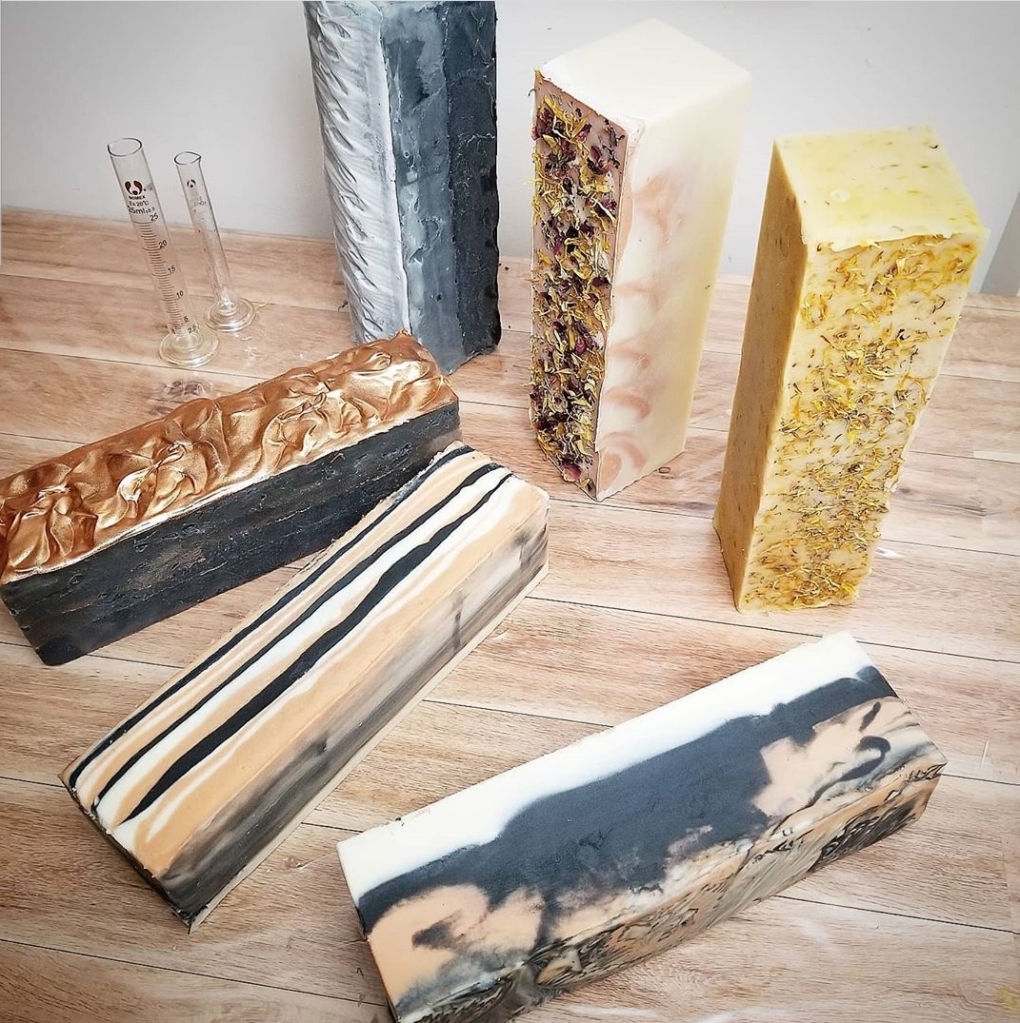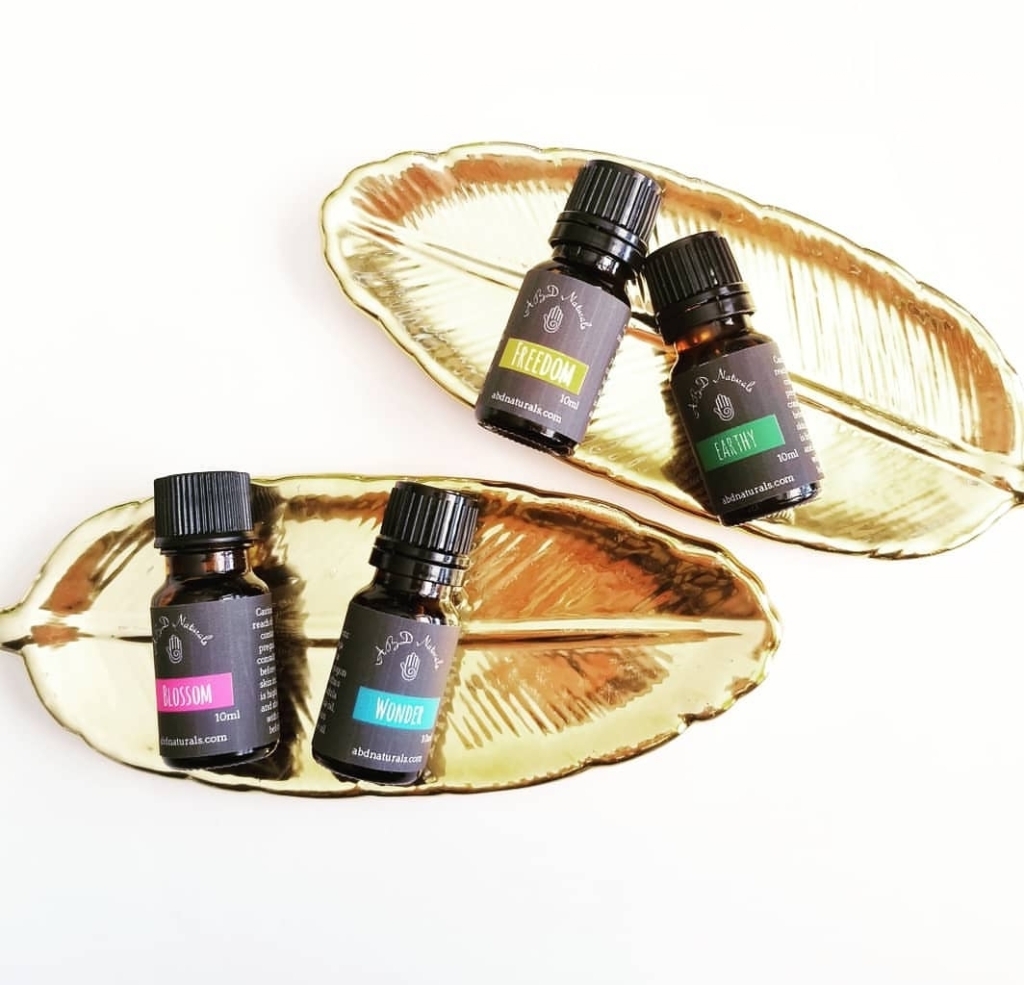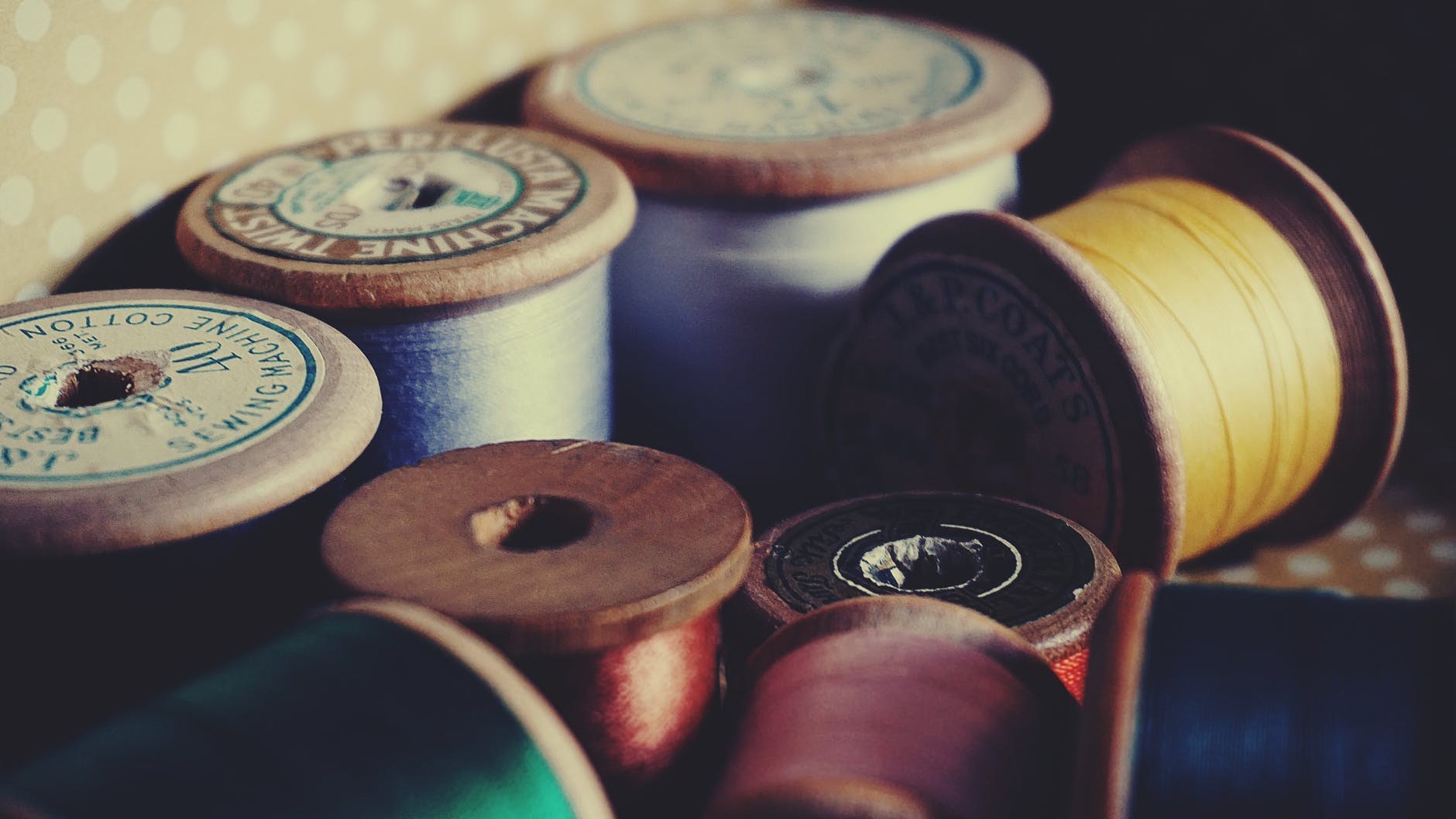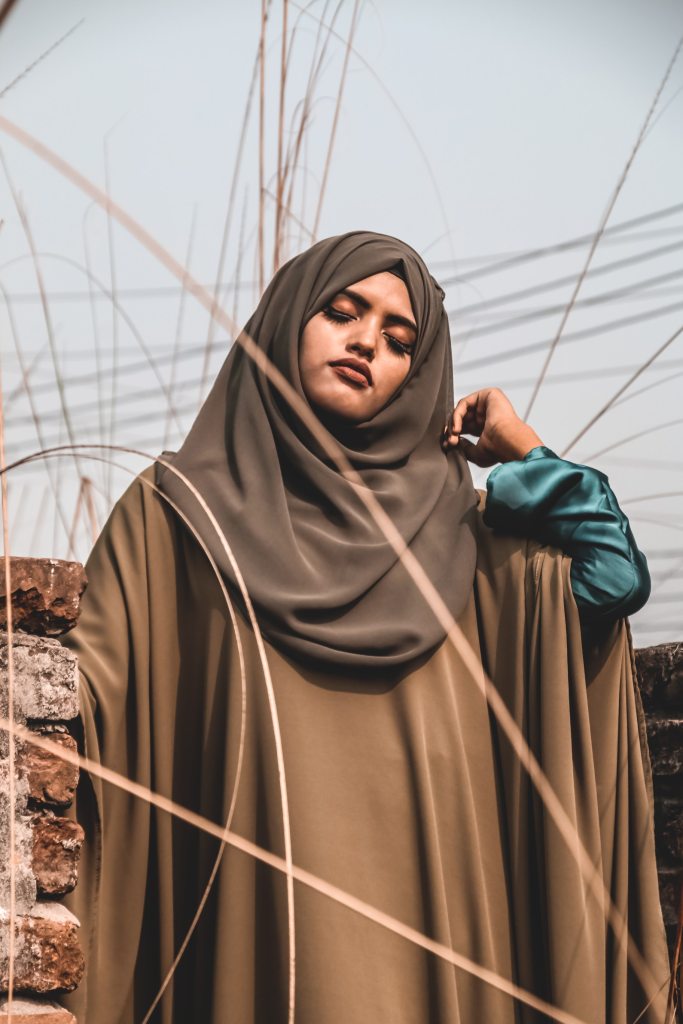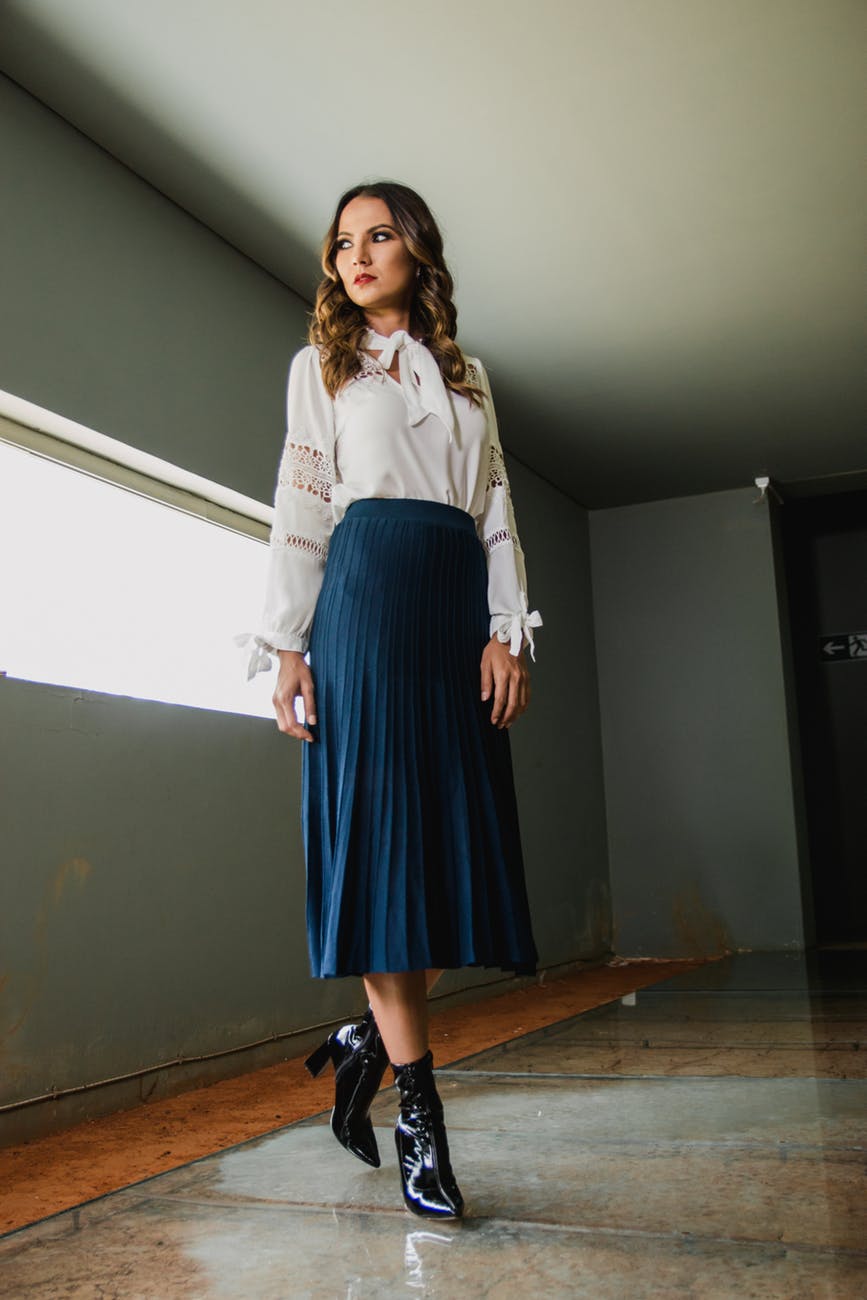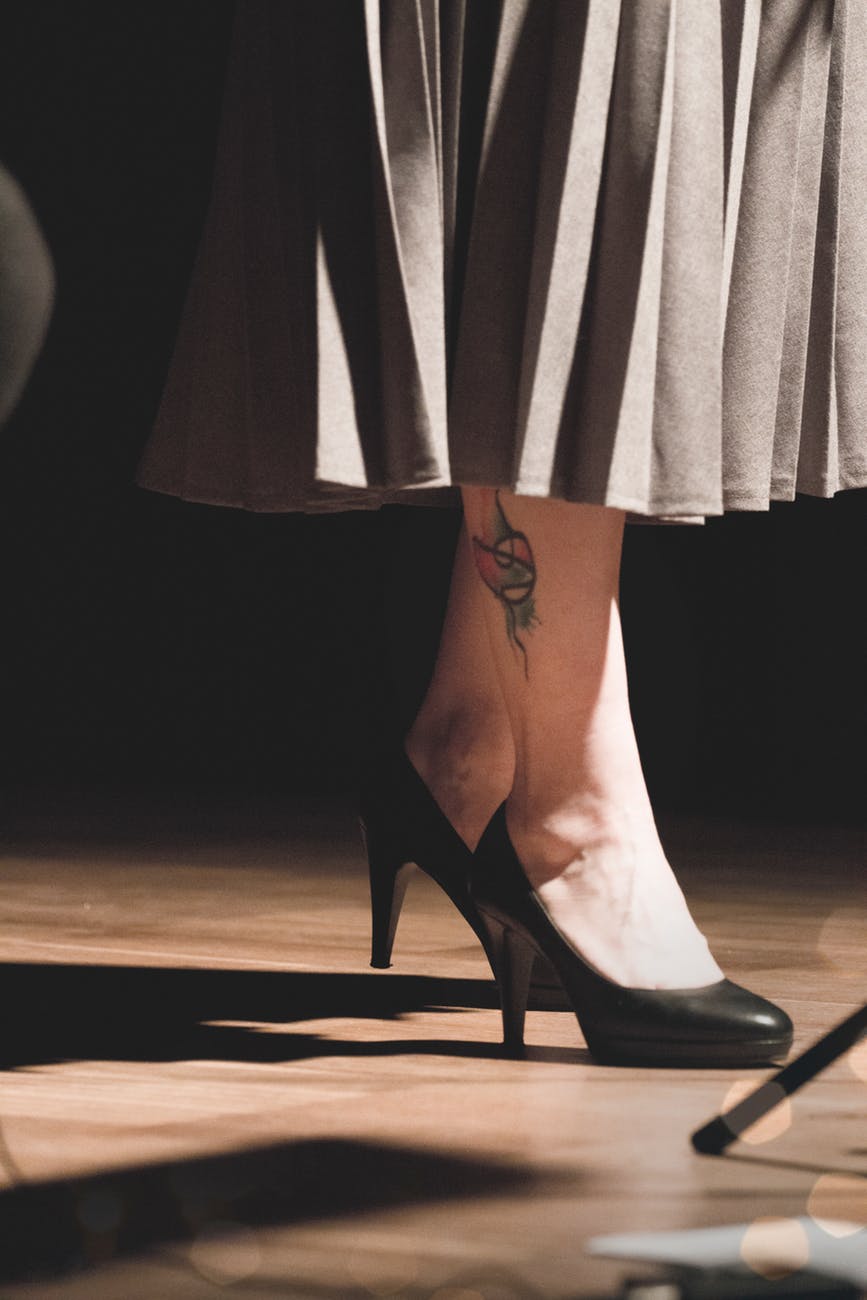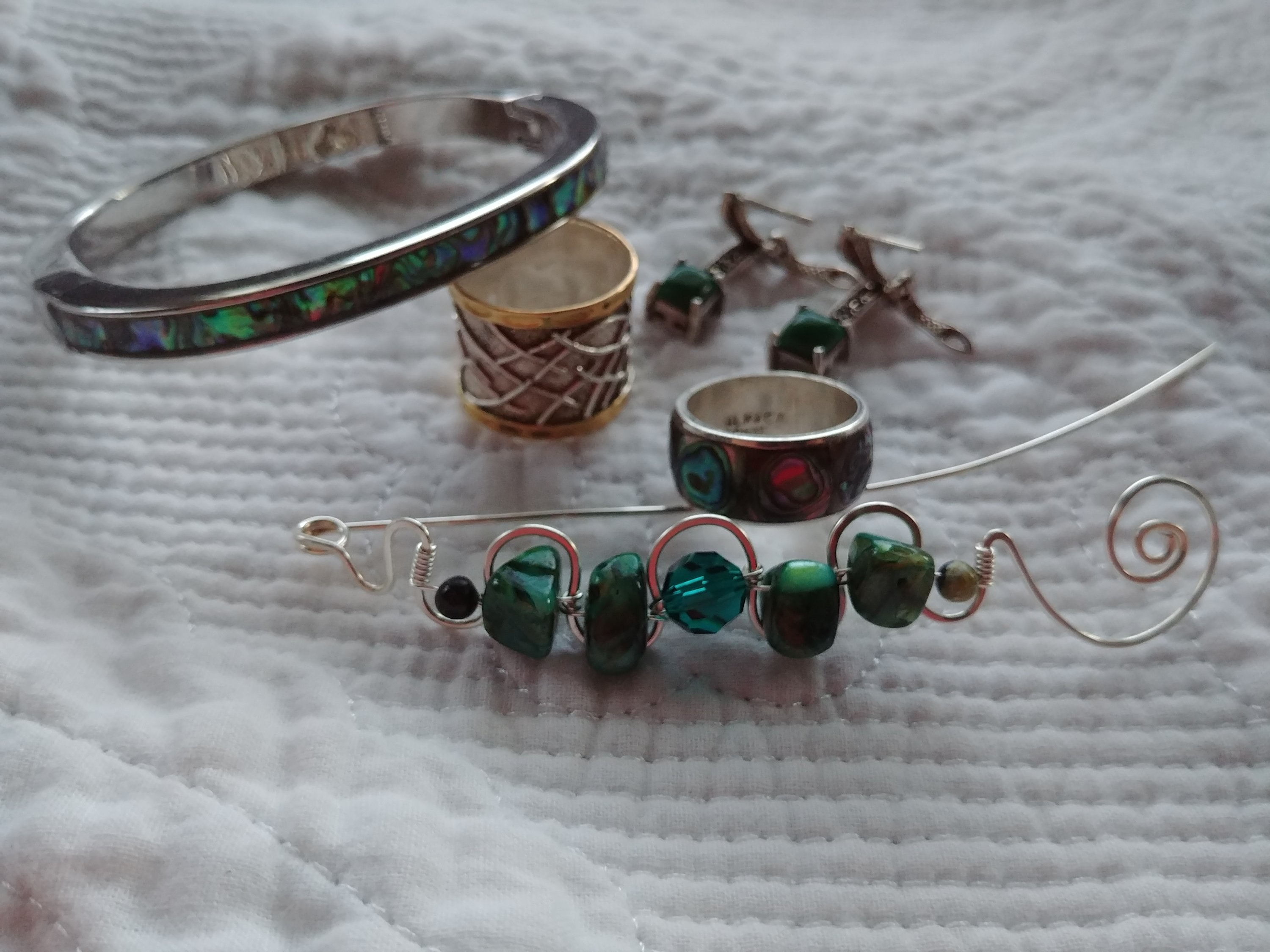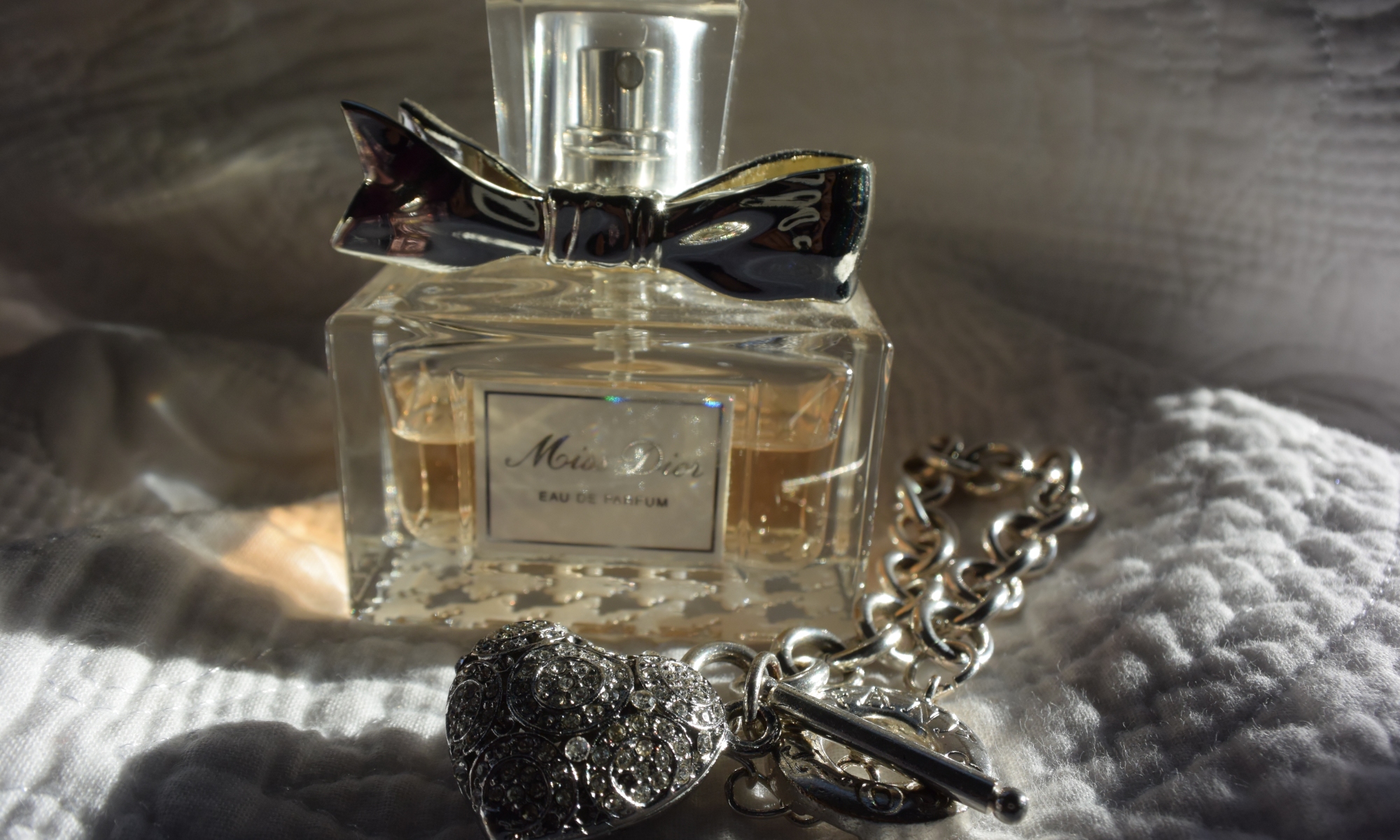
Art for the Soul
Marvi and I never actually met in person. I was drawn to her paintings, which she posted on a community groupchat we share. Her unique style had stuck with me from previous years, I recognized it: I had seen pictures of her paintings on that same chat after a bazar, or something of the sort. As it had been after the fact, I assumed everything had been sold, so I didn’t bother to reach out to her. They had called me out, and pulled at my heart-strings, but I couldn’t put my finger on why they were having such an effect on me.

This time I didn’t want to risk loosing her contact, so I reached out to her as soon as I saw her pictures. From this first contact I discovered that she doesn’t just paint, she’s also an artistic card writer, and runs a children’s YouTube channel with her kids. I requested to see more of her paintings, and I perused her two YouTube channels. The more I saw of her work, the more intrigued I got. So I asked her if she’d agree to be interviewed for my blog. She graciously agreed, and the following is our exchange on the subject of her creativity.

- Salam Marvi, Let’s get the introductions out of the way first. What is your background? What would you like our readers to know about you?
I come from Pakistan, from the province of Sindh to be precise; hence my name: Marvi is a folk-legend. I am a chartered accountant by profession, When I was younger, I really wanted to pursue interior design but fate had planned differently for me, so I studied accounting and kept following my interests in arts and designing on the side, as a passion. I am a mother of two beautiful kids, masha-Allah, my son is four and my daughter is two years old.

2. Masha Allah. Interesting! You are not the first who tells me that they pursued a more practical academic route, despite knowing early on that you liked the arts. It’s a smart move, as you always have something to fall back on if the art route doesn’t pan out, as it often doesn’t. And although I’d like to say that following your passions would be ideal, I have had friends who were very glad that they did have a plan B, as it allowed them to be able to pay the bills. But I’m curious about your name now! I never heard of the Marvi legend, could you share it?
So, Marvi in the story is depicted as a very beautiful girl with whom the King, Omar, falls in love. Since Marvi was interested in neither kingdom nor king, she refused to marry him. The king abducts her, but Marvi keeps on refusing, longing for her home and homeland. This part is common, but the next part I am not sure about, since people to omit it one way or the other. In the end, king Omar comes to learn that he can’t marry her because they were wet-nursed by the same lady, and so technically, they are like siblings, (lol). In short, Marvi is a symbol of love for homeland.

3. What attracts you to art?
My love for art started as young as I could remember, I don’t think I had ever missed an opportunity to make a birthday, get well soon, love you, or miss you card, (lol). There was this one time when I made a card for my friend’s birthday and my other friend came close to me and mentioned, hers was coming soon and she wanted exactly the same card (lol). I think it was a compliment. What attracts me to art is the joy it brings to my and other people’s lives. I remember being more excited about the reaction of the other person when I was making something for them, be it a card or some art project. Personalizing a particular piece of art shows that the other person matters to you and that’s all that there is to this life, don’t you agree? One way or the other, this life is all about expressing love, for God, for people around you, and even for the animals, through words AND actions.
For me, art is very therapeutic. After a long week/month especially after I had kids, there’s nothing that winds me down better than a nice art project.

4. I can relate to that, for sure. Compliments you get for things you’ve put effort into really stick. I think I’m starting to understand what draws me into your art: it’s the feeling and care you express through it. It really shines through! Masha Allah!
Thank you so much, these words mean a lot to me. It lets me know that I have been successful in pouring at least some of my heart onto the canvas, if not all.
3. You are very artistic, and express yourself in many different ways, between your calligraphy YouTube channel, your kids’ YouTube channel, your paintings, it’s clear to me at least, that you have a lot to say, and that you have a very particular way of saying it, what are you trying to say with your art? What is important to you?
I DO have a lot to say (lol), I deeply analyze life experiences, mine and others’. I observe and read a lot, combining these two, you have a pool of deductions and reductions. I think about what’s the best way of expressing that one particular point that I have in my mind, what medium would be best suitable, and who’s the recipient of my message. Before, I started my YouTube kids’ channel, what I do on those videos is what I used to do 24/7 live with the audience that I gave birth to, (lol), I really did! I feel my kids would feel less of a threat to their power and independence if Skye from paw patrol would tell them to do something than their mommy, so I get to pick my battles. If it was something petty, Skye would make them do it without arguments, Skye could feed them, change their diapers without them running around, unless there was something serious and Mommy had to come out of me and draw the line.

I think at the end of the day, I am saying what I should say instead of what other people want to hear. We and our kids have never been lonelier despite the world around us, and that’s the theme you would notice in most of my paintings. I feel like there’s a dire need for people to reconnect to reality and each other, as people are slowly drifting away into this delusionary and virtual world, based on self-centeredness.
I think personal interaction and learning selflessness is something really important to me, and therefore, I chose to use this double edged-sword, which is social media, to my advantage. The very medium that’s taking us apart from each other and our values, can be used to remind us about what’s actually important, especially for the kids, as they are our future. I strongly believe that shaping our kids’ future starts early on: if we teach them the value of truth, honesty, kindness and respect today, then, tomorrow we have one less counter-productive adult to deal with,, be it on a personal level or societal.

5. Ah yes, there are many studies showing exactly what you are talking about: our increasing disconnectedness in spite of our frequent and obsessive virtual interactions. So how do you make content that goes beyond the virtual? What impetus do you wish to inspire in your viewers?
So, the virtual platform is just a start, it’s a means to an end, basically. Recent studies do tell us both things: that this is what’s driving us apart and that it is also the most effective way of communicating to the masses. Eventually, my goal is to inspire people to circle back around, where ‘Face’ is the ‘Book’ , and ‘Friends’ are not just a number. In fact, I have written a whole poem about that! Stay tuned to marnimadsal for that..

6. Your paintings are very peaceful, almost meditative, is your painting activity a form of meditation?
The main goal of meditation is to acquire peace, that’s what I am trying to achieve through my paintings, or any other art project. I want to clear my mind, let go of any negative energy that’s been draining me out. If everything goes well during the process, I do feel very rejuvenated after my project.

7. What happens to the paintings that draw out your negativity? Are you hiding them? Or do you keep working on them until they turn into something peaceful, or until you rediscover peace within yourself?
The positive energy that comes through the mere process simply transcends the negative energy. Negativity doesn’t come pouring out of me in my paintings. I basically acquire zen by looking at the paint, brushes, a blank slate, and having a moment to myself. It’s a feeling similar to that of starting over, with a clear heart and mind, giving everything another chance, with sincerity.

8. Your videos, both on the calligraphy channel, and on the kids’ channel, are also soothing to watch and to listen to, is this simply an expression of your personality, or are you intentionally keeping very soft lighting, pen-strokes, and voicing?
I think generally I am the kind of person who keeps calm. I don’t really enjoy over-stimulating things; I feel like we tend to lose focus from the main point if there’s too much going around. As for the kids’ channel, I do add some parts that would make them happy or excite them so that they at least want to watch the video. I really want the parents to be able to find something balanced and not overly-stimulating for the kids, because I feel as a parent, I should put in front of my kids what they should be watching, not what they want to watch, at least not all the time.
https://www.youtube.com/@marnimadsal
9. How do you know you hit the balance between something they like and would want to watch, and something that simply attracts them because of the energy or stimulation they derive from it?
I have two volunteers for testing at home, (lol)! See, I believe that even if you give your kid some screentime, which is almost inevitable at some point, you can still spend time with them. If I want to sit down or get a chore done, I have never left my kids alone in a room with a screen: either they take part in the chore, or I watch alongside them as I do my chores. In my 4 years of mommy-life, I put on what they like, and I’m close enough to know all the names of the episodes and shows and know their favorites. That way, there’s obviously a database in my head as to which channels think about their content of how it would affect a kid’s thinking and what channels just mindlessly upload videos without thinking about the consequences. That way, I can ROUGHLY evaluate, though obviously every kid is different, if it has achieved a balance or not. I also run videos by my son first. Most of the time the very idea for each new video actually comes out of our play-time together. It’s either something that I made up for them and they enjoyed it, or something I’ve been doing with them that they like. For example, the dino song, I made for my son, and he loves it. Whereas the song that I sang in Sofia’s bedtime episode, I didn’t write, but it’s something that I have always sung to my kids.

6. Where do you see your channels and your painting going in five years? Is it a smooth and clear trajectory, or are you just enjoying the journey?
For the channels, even though I love what I am doing, I want to monetize them as well, I do see potential in both of those areas (the writing and the kids’ one), and I do see gaps as well, as I mentioned. I want to see people taking out time for other people to express their feelings, I want to express what I have to say through calligraphy. As for the kids’ channel, I want to be able to contribute by bringing children closer to the values which we should aspire to adhered to.
The painting journey, however, is something that I am enjoying in and of itself. I actually started painting just a year ago, when my mom bought me a set of acrylic paints as a present. Before that, I’d do small scale projects with the make-up sets I was given: nail-colors and lip-glosses… really! I don’t wear make-up so I’d use those for painting and making cards. So, 5 years from now, I just see myself improving my painting skills.
https://www.youtube.com/@incywincyadv
7. Now, I couldn’t finish this without asking about your kids. How do they interact with your artistry? Do they also paint? Is this something you purposefully include in their day to day lives?
Well, I paint when they are asleep at night, or are out with their father. My husband supports me by providing this opportunity so that I can get a break and get back to my sanity (lol). I ask my son what he thinks about it after I am done, sometimes he’ll tell me if he likes it or not, but most of the time the answer is, ‘I want to paint too!’. However, I do bring out paint every once in a while, for them either in the garage, or in the backyard in the summer, because I don’t want to give them paint and then constantly be stressing them out about using it carefully around the walls: because where’s the fun in that?! So, when I do, they don’t want to come back to the house, that’s how much they enjoy it! My daughter, when she was 18 months old, once pointed towards the paint brushes and then took me where the paints were in the garage trying to tell me she wanted to paint. I purposefully give them pencil-colors and crayons and let them be, to express their creativity, it’s very important for them, since they have so much to say, and so many stories to tell. They and I absolutely love it!

8. Do you have any advice for moms who would like to include more artistic expression in their kids’ lives?
My advice for those moms would be to take out some one-on-one time without the screen presence (tabs or phones) in the room, with a kids-friendly environment and products, and then just let them be. If you lend an ear when the kids are done as to what they were trying to show, you will be surprised what stories, emotions and expressions surface with those pictures. You know what they say: a picture is worth a thousand words! I mean, if it wasn’t for my mom and dad taking out time to listen to me, my ideas and stories, despite how silly they may have sounded, I wouldn’t be who I am today.

9. Is there anything else you feel you’d like to discuss, mention, or bring to our readers’ attention?
Connect to nature, wise ones (which are our elders), and your loved ones. There’s so much that we are losing in this fast-paced world already, let not the relations be among those things. Take out time for the things that actually matter.

This has been really lovely, thank you very much for your time. Where can people find you for customizable cards, or to purchase a painting?”
Thank YOU for giving me this wonderful opportunity to present my views, I feel really honored. I can write a message or design a personalized card, if the details are provided through email or DM, the whole process is usually mentioned in the description box of the video clip or also on my channel’s page on YouTube.

My paintings however, can be found either on Instagram or Facebook page. I do not ship as of right now, but they are available to be picked up locally anytime.

Here are the links to my pages on different platforms:
Kids YouTube channel: Incy Wincy Adventures
Facebook: Incy Wincy Adventures
Art, Creative writing and personalized messages YouTube channel: Marnimadsal
Instagram: @marnimadsal
Facebook: Marnimadsal



The Healing Power of Soap
This experience with Covid19, the lock-down, increased hygiene practices, and the global implications have awakened us to how interconnected everyone and everything is. Not just people in the same community, but all over the world, not just our backyards, but animals that are now coming to visit us, because we’ve invaded their ecosystems and they have nowhere else to go. Simple things like going grocery shopping, shaking hands, going to school, have all been disrupted because of this lack of awareness of how truly interconnected our actions anywhere in the world can impact us. One of the simple things that we’ve overlooked for long, is soap. Soap, incredibly, when used appropriately, can stave off the deadly virus. This is a great advantage! Imagine if we had to boil or use harsh disinfectants only to clean surfaces, and our hands! That would definitely a whole other level of nightmare!

Sawsen Abdellawi has had some experience in this field, having had a child with severe eczema, she was prescribed cortisol. Having a background in biology, and knowing the possible side-effects of cortisol, she refused to use it on her baby’s skin. So she searched on the market for natural remedies that could take care of her infant’s eczema, after discussing options with her pediatric dermatologist. She was unable to find anything, so she decided to take the matter into her own hands, and started experimenting with soap-making. Her formulas were the only ones that were gentle enough to cleanse her child’s skin without irritating it. She discovered she wasn’t the only one going through such trials, and began making her soaps for other moms in similar situations. This then grew into a small business in 2016, and she is now selling her home-made gentle soaps and other biodegradable, natural, non-toxic skin and home products all over the world.
Because she is Muslim, and thus understands our God-given amana to take care of ourselves, our families, our neighbors, and the environment, she felt the most apt name for her business was ABD Naturals. ABD means servant, as she feels she is doing a service by providing gentle products that not only help people take care of their bodies and homes, but they don’t do any collateral harm in the process. I don’t remember how I came across her line, but the name immediately grabbed my attention, and I thought I’d give her products a try. I ordered her mini soaps, as she has a very wide selection to choose from and I wasn’t sure what I’d like. Not only did I love all of her soaps, I ended up buying more in order to gift them to teachers, colleagues, friends, and neighbors in order to spread the love. Because it’s a small business, and I’m a return customer, Sawsen remembered me, and was always able to custom cater to my requests, adding little thank you gifts here and there. We began chatting, and I thought this might be the perfect time to talk about the importance of the products we use, how we treat our bodies (infant skins in particular), our lungs (as in the use of scented perfumes, incense sticks, and aromatherapy), and our environment through the making and using of cleaning and scented products. Sawsen graciously agreed to answer a few pressing questions I had, and you can read the article we co-wrote for American Muslim Women’s Magazine, coming up in late May or early June, insha Allah. But for now, here’s my interview with Sawsen, owner and maker of ABD Naturals, based in Edmonton, Alberta (Canada).

What is the concept behind ABD Naturals?
Our motto is ‘Caring hands’. It reflects that all our products are handmade, with lots of care and love and they help customers find healthy alternatives for their skin and home at lowest possible cost. ABD (abed) in Arabic is a servant and ABD Naturals stands for using Nature as a servant, and we reciprocate by protecting it. It stands for a relationship between humans and natural resources, which needs to be mutually beneficial in order to last.
We try to raise awareness of the side effects of chemicals and toxins that we use in our daily life. These hidden ingredients increase risks of leading an unhealthy life, as we can clearly see these days.
I refer to the business as ABD Naturals, but in reality I am behind it all; making the products, labeling them, packaging, and everything that goes on all the way to the final product is done by me in order to reduce the cost and keep my products affordable.
What’s the story behind Abd Naturals?
Since I was a child I was fascinated by our traditional home remedy recipes and the creations made by my grandmothers and the older ladies of my town. When I grew up I studied Biology and tried to respect and study nature in all aspects of my life. I believe that a natural lifestyle is key for healthy living. For example, I make my food from scratch and I pay a lot of attention to labels when it comes to choosing my cosmetics. When I had my son in 2016, he had bad eczema and his pediatric dermatologist prescribed cortisone cream to be used twice a day at the age of 6 months. This made me extremely uncomfortable, as I know baby skins are like literal sponges. There was no way that I could use the ointment on my baby. I tried to find a safer alternative on the market, but had no luck.
I spoke with his pediatric dermatologist again and explained that I refuse to use the medication and that I need his help to find a safe alternative, so he suggested that I look for natural cosmetics at my local farmers’ market. That was the beginning of a new journey in our lives! I went home determined that I would be the one to make his cream and everything that would go on his skin. I was successful pretty soon, thanks to my biological and home-remedy background, and the products I was making were having an immediate and clear effect on my son’s skin. After seeing the big change on my own baby, I decided to start providing my products to help other parents who have the same situation.
I believe most people have a desire to use natural alternatives, but they still can’t find them easily, and if they do, they are often not affordable. The struggle and the disappointments that I had when I was looking for 100% natural products for my baby and seeing other parents facing the same challenges encouraged me to start my business online to reach a larger network of people in need.

Why is making your own soap, oils, and candles important to you?
Before I started making my own cosmetics and home products I struggled finding products that I could trust. I always look for products made with the necessary ingredients only, as natural as possible, safe to use, and eco-friendly. Making my own products gives me control over what ingredients I use. I personally choose what goes into my products and what I avoid.
90-99% of our products are 100% natural as they’re oil based. Oil based means I can skip the use of preservatives. The rest of our products (1-10%) contain water, which means if I don’t add some form of preservative they’ll have a shelf life of a few days to a week, and then will start growing mold and become unusable. There is a very wide range of preservatives out there, but I only use those approved by ECOCERT, which can be used for organic skincare.

What issues have you encountered in your years of soap-making experience?
The issues I have encountered and still struggle with are how to reduce the cost of products while using high grade ingredients. Keeping costs steady despite constant increases in prices of raw materials is an ongoing challenge. It’s also sometimes difficult to prove to new customers that affordable products doesn’t mean they’re cheaply made, it just means I have a smaller profit margin. People who don’t know me and haven’t tried my products have a hard time believing that I would pay myself so little for products I truly believe in. It’s a bit tricky to explain without seeming odd.
You warn against bkhoor (traditional Arabic incense) and commerical incense use, why is this? What alternative do you offer?
Commercial bokhoor and incense usually have high levels of toxins and contaminants such as Sulfur Oxides (SOx) which make them burn faster, carbon monoxide(CO), Nitrogen oxides (NOx), and of course the fragrance that itself is a big story. Fragrance oils do not have full ingredient disclosure because they fall under “Trade Secret” status with the FDA and there are over 3’500 materials that are approved to be used in them! One single scent can contain over 300 aroma chemicals. If you choose to burn this kind of incense or bokhoor, or even scented candles for that matter, you risk to pollute and suffocate your indoor space with toxins and chemicals which you and your loved ones inhale.
My advice is to check carefully the list of ingredients before buying any incense or bokhoor or any other product, really, but particularly those you’re going to burn in your home. If you don’t see the full list, then don’t buy it and don’t use it. I always air on the side of caution on this one, for sure.
What do you think are the greatest incentives for Muslim women to seek out natural products?
As Muslim women we believe our bodies are an amana (responsibility) and we have to take good care of them. We also shouldn’t waste our natural resources. We need to aim to use natural and eco-friendly products to keep our bodies and our environment safe. We can’t have one without the other, that’s just the way it is. And I think it’s becoming increasingly obvious to everyone nowadays.
What products do you provide to your clientele?
ABD Naturals offers natural cosmetics, bath and home products, such as soaps, oils, candles, air-fresheners, deodorants, bath salts, lip-balms, etc..
You also do party favors, is this a growing side of your business?
Party favors is something I’ve been asked to do. I take custom orders, not just for my soaps, but with many other items. I like meeting my customers’ needs and wants, as long as they align with my products and services.
There are many growing sides of the business like the home section. People appreciate aromatherapy and are coming to understand the nefarious implications of burning unhealthy fumes in the home. I am also working on a line of natural perfumes that will be an extension of the body section. I’m hoping to get into natural makeup in the future as well.
Oh! That’s amazing! I can’t wait for that to roll out! But this body and home product business seems extremely competitive. How do you stay in the game?
ABD Naturals‘ soaps stands by using natural oils, natural scents, and natural colorants. I also try to come up with artistic designs to appeal to the visual sense on top of the olfactory sense. These characteristics are hard to find in one product.
Being an artisan soap maker, I make unique pieces that attract customers the same way an art piece would. Customers who look for natural handmade soaps and beauty products are very discerning, and I try to give them everything they’re looking for, at affordable prices. Every bar of soap is unique; it differs from the others in some way, simply by virtue of having been made in single batches by hand. When you get close to these bars it feels like an adventure, you would want to smell them all and you would feel the love they’re made with. I do believe that objects, especially things made with love and care emit energy, and it can be felt by anyone holding it and paying attention. In this manner every customer gets attracted to the piece that suits her/him the most. But while soap-making is a widely growing industry, the awareness and the need of natural products is growing as well, so I focus on the quality of my creations and on my customers’ requests. I believe that establishing a strong and healthy relationship with my customers is more important than the market competition. I’m more interested in quality than quantity.
Where do you see your business in 5 years?
In 5 years, I see ABD Naturals not only as an online business but also a store front with bigger selections of natural handmade products and an educational section that teaches women to start their own business from home, in order to be able to support their families.
What’s the best advice you’d give our readers to encourage them to take charge of their part in the environment and our own skin health?
My advice is to think of your body and the environment as a responsibility, take care of them, so they can take care of you in return. It’s a symbiotic relationship.
What you put into or onto your body largely determines where you’ll be in years to come, health-wise. So it’s up to you to choose wisely. Also, what we set up today, will affect future generations, so we need to think of the legacy we want to leave for our children, grandchildren, and beyond. Whatever you do to the environment today will impact your children tomorrow, so act wisely.
Thank you for taking the time to answer these questions for Dear Sister!
Thank you so much.
If you’d like to check out Sawsen’s products, you can find them on Instagram, where all her new creations pop up first; on Facebook, where she explains a bit more of what goes into her products; you may purchase her entire line on her website; and you can even see her in action on her YouTube channel! I’m sure you’ll find something you’ll love, just like I did, over and over!
Up and Coming Jewler in Our Midst
How We Met
It was about two years ago that I attended our first annual Multicultural Bazar at our Premier Fitness and Recreation Center, which fell around Ramadan. This meant that Muslims from the region would surely be there to sell and purchase Ramadan and Eid decorations, gifts, and to support local craftspeople and vendors. I love attending such events because I’m always eager to see what local talents we have, what goods and services are available in my vicinity, and who I might be able to support. I attend local craft shows, regular markets, and mosque-held bazars as much as I can, but this was the first one specifically emphasizing multicultural talents and businesses. Being around Ramadan, I was sure to find a high concentration of Muslim owned goods and services for sale, and it would surely be a focal meeting spot for many Muslim friends and neighbors to see each other and wish each other well. So attendance was a no brainer. This particular year I found the usual clothing and hijab sellers, a few paint and graphic artists, a few seamstresses specializing in different types of garments (women or kids), and some home crafters making everything from soap, to knit and crocheted items, to keychains and charms. There’s usually one vendor that captures my attention out of the dozens of tables, sometimes it’s a soap maker (like the one I featured years ago, and has now moved on to making crochet dolls), another time it might be a baker, and so on. But sometimes I leave not having found anything that really inspires me. This particular year, I thought, might be one of those years when I don’t find anything inspiring. But, alas, as I was on my way out, I came across ARJewelry!

As I was heading out of the bazar, having almost completed my rounds, and purchased the token items to stuff my kids’ Eid bags with, I had almost resigned myself. I had not found anything that truly captured my imagination, but I was determined to finish my tour of the tables. I turned the corner and was forcing myself to complete my round diligently, as the true treasure seeker that I am. Just as I was about to leave the venue… there it was: Amal Ragab’s table, shimmering in pure silver and brass magnificence! I cautiously approached, expecting exorbitant prices, and as I scanned the various original pieces, the friendly face at the other end of the table started telling me about the maker (her mom: Amal Ragab), and how she sourced all her materials locally as much as possible, how she made everything herself, and how she was more concerned with making beautiful things accessible to the average consumer, than making huge profits. I was listening, and scanning, becoming more and more intrigued.

I picked up a pair of earrings, a necklace, a few rings, and finally decided I’d start asking for prices. These were really nice! They reminded me of the jewelry I used to admire in my hometown of gorgeous Locarno (in southern Switzerland) in the windows of Good’s Jewelers (the craft now passed down to the youngest son Beni). It has that rustic feeling of massive Giacometti sculptures, but in more delicate, bite-sized, wearable patterns. It had the same vibe, but Amal’s pieces are not as chunky, they’re a lot more delicate, and have a definite feminine touch that both Good’s jewelry and Giacometti lack. I had already spent most of my cash on little gifts for my kids, as this was my last table before exiting the bazar, and so I had to choose only one item, but I left feeling like I had just discovered the most delightful hidden treasure! I picked up a business card, and went on my way.



I’ve gone back to ARjewler’s over and over, and I’ve now purchased complete sets for myself and others as gifts. Her work is beautiful, well made, her service is impeccable, and her prices extraordinary. If you are thinking of buying something original, beautiful, inspiring, well made, ethically sourced, and that will last you for years to come, but you don’t want to break the bank doing so, then take a look at ARjewelry’s gorgeous pieces. She is now also casting pieces out of gold, on top of her silver, brass, and gold-plated brass pieces. She can customize your piece with the semi-precious stones of your choice as well. I tend to go for pearls, which she caters to, but she also has a wide array of other stunning stones that you might enjoy.

I asked Amal if she’d agree to answer a few questions for this piece, and she graciously agreed. Below you’ll find out more about Amal, what inspires her work, and what her business is about. I hope you enjoy it, and that you’ll take a few minutes to browse her Instagram , or her Facebook accounts, as you think about what to buy for yourself or a loved one this Eid!

Who is behind ARJewelry ?
ARJewelry is an avant-garde jewelry designer named Amal Ragab, who makes silver, brass, gold, and gold-plated hammered jewelry with semi-precious stones and pearls, mixing a variety of methods and styles. Amal Ragab is the owner, and craftsperson behind ARJewelry, and she crafts each piece individually. She draws inspiration from ancient Greek, Roman, and Egyptian cultures and artifacts, and aims at catering to women who appreciate beautiful jewelry, without having to pay exorbitant prices for it.

Salam Amal. Can you tell me what’s the story behind ARJewelry?
I always had a passion for unique shapes of jewelry and accessories. I rarely found what I could picture in my mind, except perhaps in Italy, so I would ask jewellers to custom make my designs for me for my personal use. I got motivated to learn jewelry making while my daughter was studying at Art College. I started off by making the jewelry for her fashion show, during her fashion design studies. She really encouraged me to continue making jewelry after the success of her runway show, and it took off from there. I felt that the market here in North America was ripe for different jewelry designs. I think there still is much room for more designers to provide unique designs at relatively affordable prices.

Your jewelry has a very particular style at the intersection of ultra modern and ancient tradition. It avails itself of elegance and nature, while simultaneously exuding an air of daring sophistication. What is your inspiration?
I get inspired by organic and irregular shapes, along with jewelry from ancient Egypt, Greece, and Rome.

What do you think Muslim women look for in a piece of jewelry?
I think they are mostly attracted to semi precious stones as they believe in their energy. Organic shapes that look like flowers are also popular among Muslim women.



How do you decide what you’ll make next?
I work by piece and I start my next piece when I get inspired by something.

I know you also do custom orders, as I’ve commissioned a few pieces from you myself. Is there a limit to what you’ll take on?
I think that the jewelry that I make is limited to hammered, folded, and beading jewelry. That’s what I stick to.
How would you describe your technique?
First I design the concept that I have in mind, then I choose the metal that I want to work with, then I cut it and file it, and use the technique I require to get the effect I’m looking for. Sometimes it’s fire, sometimes I hammer, or fold, and any combination of these. There are many different ways to handle the metal to get a variety of textures. At this point I also choose the kind of stone that I will be using. I always use stones that have some significance, such as agate, amazonite, or pearls. This year I’m starting a new technique of metalsmithing that allows me to texturize metal with fire.



Where do you see your business in 5 years?
I hope to build a unique brand that caters to customers who absolutely love unique designs! I hope that this originality will gain me reknown in North America and internationally.

I think that’s a real possibility! What’s your favorite aspect of your business? How do you balance between what customers want and what you’re inspired to create?
I love that I’m doing what I love. So I’d say my favorite aspect would really be the creative side of the business. As for the balance between my own creativity and my customers’ needs, I always try to meet my customers’ wishes. I try to accomodate the metals they prefer, say if they want gold-plated, gold, or silver, or if they want a particular shape. I’ll change the stones to they type they prefer. I am always accommodating to these types of request. But I try to stick to hammered and folded geometric shapes. I’ve had people ask me if I’d do calligraphy, for example, because it’s trendy, but I always say no, because that’s not my style, it’s not my specialty. I prefer to stick to the esthetic that I have developed.




Thank you very much for taking the time for this interview. I really love your designs, and I wish you all the best.
Thank you!
Muslima
What attracted me to Islam? Tawheed. For those who aren’t familiar with Arabic, or Islamic terminology, this means oneness, or the belief in One Creator Who begets not (has no children), nor was begotten (was not born). Like the Native American Creation Story, there’s no end to the turtles upon which other turtles reside; there’s instead a sense of the infinite that goes beyond comprehension, but is satisfactory in that it doesn’t attempt to limit The Creator to creation’s understanding and experiences. Like Christianity it has a moral code and an expressed desire to connect with this Creator on a regular basis. This oneness has been shown to be directly linked to happiness, or contentment, as revealed in a recent German study at the University of Munich.
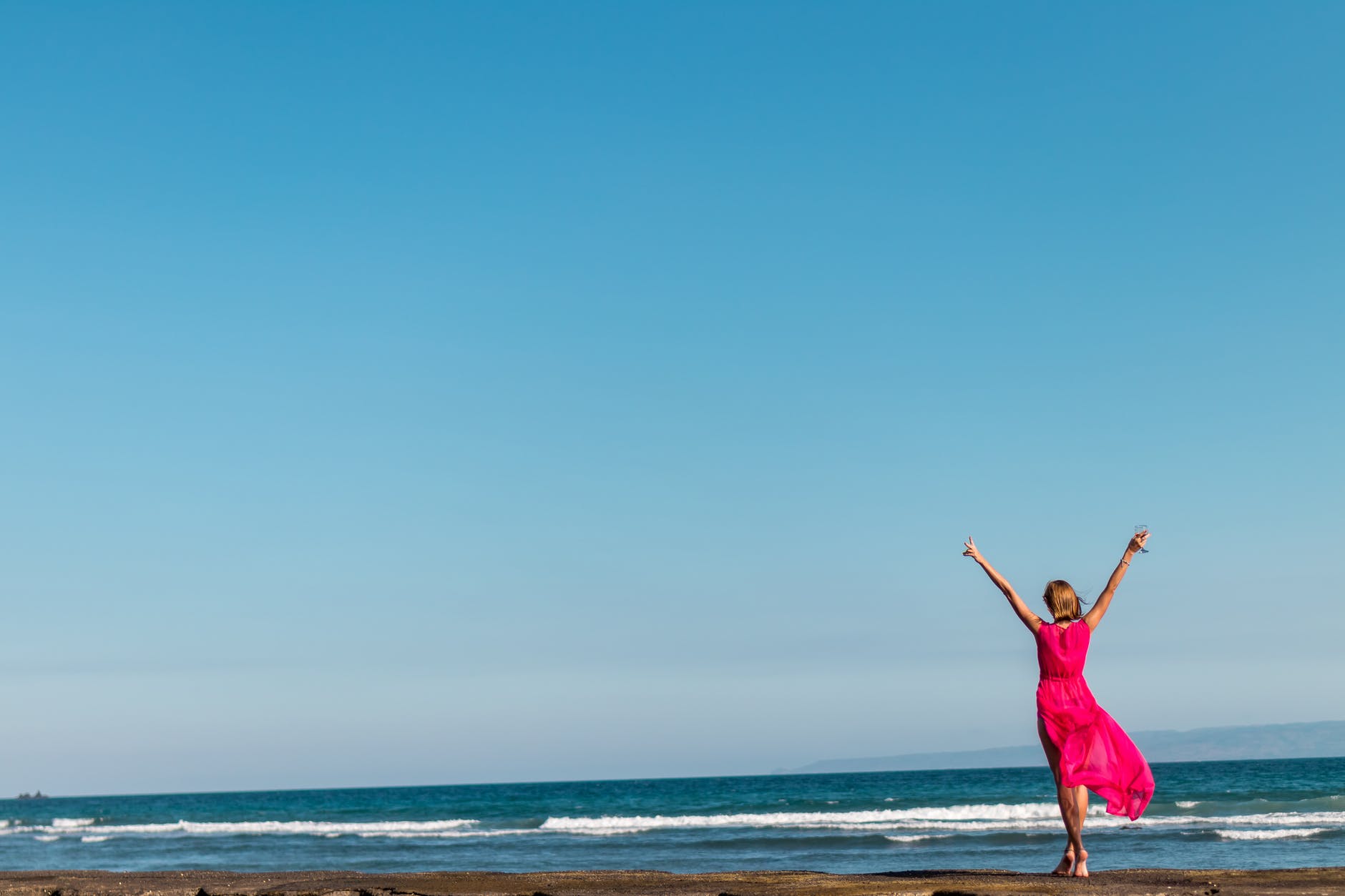
When one changes one’s religion there’s this overriding urge to “get it right,” having been given a second chance, much like a near death experience. The relief of having been freed from the shackles of ignorance and superficiality, confusion and disillusionment brings with it a whole new energy and motivation that can only be described as a rebirth of sorts. Which is, I guess, why a certain branch of Christianity calls itself “Born Again.” I wanted to learn everything, and do everything perfectly, a bit because I felt I had wasted twenty years of my life doing and believing the wrong things, and partly because I was grateful to God for guiding me to what I perceived to be the ultimate truth about life.

My expectation was that Muslims, because they are raised with this knowledge, without all the distractions that I had experienced, would have to be perfect. Their belief system was flawless, and having lived with it for generations, they could only be full of wisdom, knowledge, kindness, and boundless insight. It had to be this way, how else could it be? Well, obviously I was surrounded by remarkable Muslims who did a tremendous job of showing me the best Islam has to offer, and whenever they lived short of its outlines, they made it clear that it was due to their own shortcomings. I, for example, knew Muslim girls who didn’t wear hijab – the headscarf, which I immediately began to wear as soon as I said my shahada (testimony of faith) – but instead of debating with me about the pros and cons, the extra-temporality of certain dictums, they simply told me that they believe they should wear it, but for the moment they wanted their hair to show, it was their own weakness that prevented them from embracing it, although they had no issue with it as a concept. It was refreshing to see the humility of these Muslims, who were merely being human, and admitting their flaws, whilst declaring their wish to improve.

It’s not often that people admit they’re wrong. Many people will attack the religion before admitting they’re too short-sighted or weak to fully embrace the fact that God knows better. But it also takes courage to be so forthright, as I’ve come to know. Societal pressures can be enormous, and for someone to openly declare their unwillingness to abide by a norm that has been enforced for generations is no small feat. It is true that some women wear it only because of these social pressures, but I’ve found that the vast majority choose to donne hijab sincerely as an act of worship to God, independent from everything else.
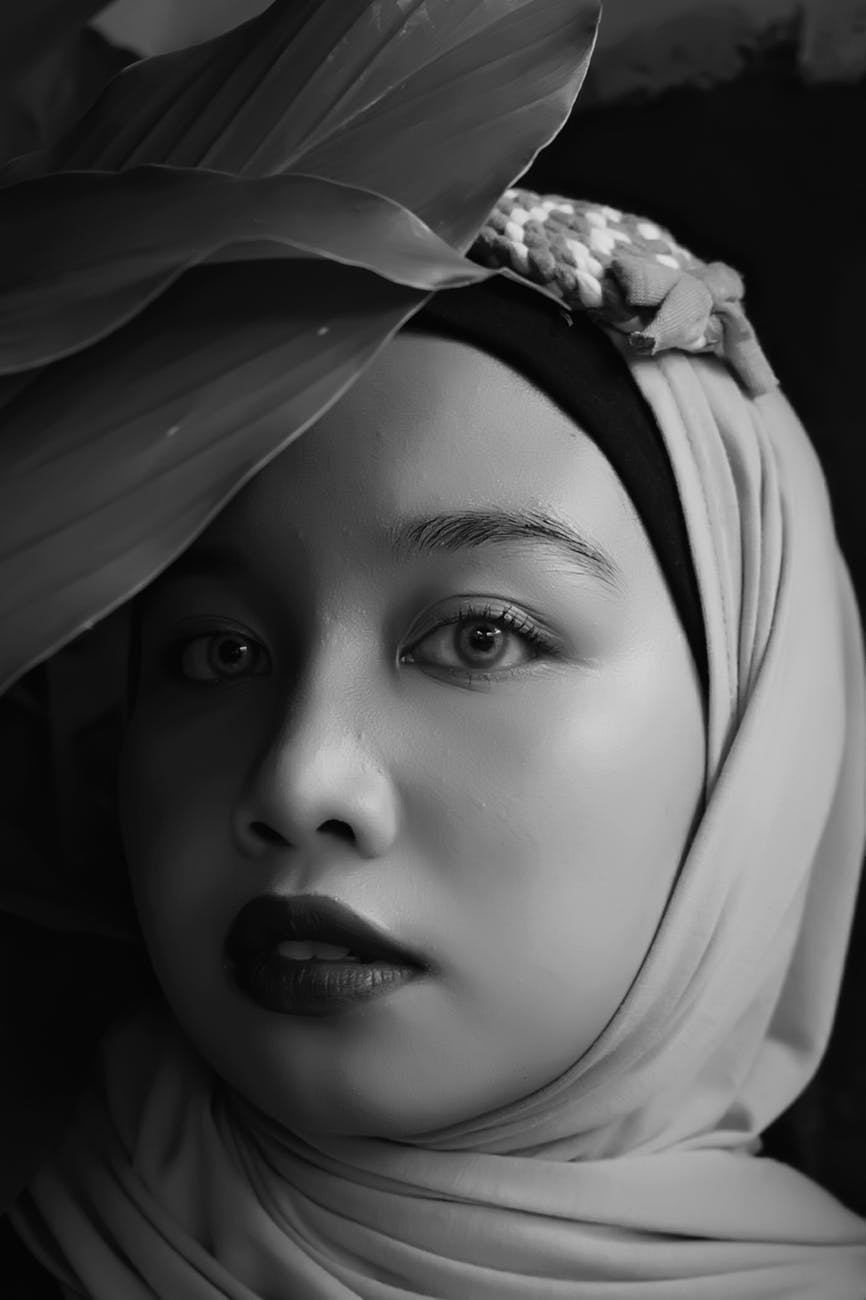
But I don’t want this article to be solely about hijab, despite the fact that I could go on for many more pages about it. A tremendous amount of literature has already been written on the subject, and I won’t bore you with redundant information. Suffice it to say that I love my hijab, I’m proud of it, it makes complete sense to me intellectually, spiritually and in practical terms. I have my weaknesses, but this is one thing I fortunately never fell short on. Although some have argued with me that my hijab may not be “true” hijab at times, I consider that like arguing over how to pronounce tomatoes or potatoes.

Islam offered me a view of the world that is very neatly in line with Native Spiritualism, not only from the Creator’s point of view, but from creation as well. It encompasses a respect for nature, animals, and human beings that is rarely discussed in other religious traditions. This need to preserve nature is something that I appreciate not only because of my Mi’kmaq roots, but also because of my Swiss upbringing. Switzerland is known for its obsessive care of nature, often associated to its aesthetics, though certainly not limited to such superficial considerations. In Switzerland we paid for and re-used plastic bags fifty years ago, preferably we’d use our own trolly or fabric bags, but when we didn’t have enough of those we’d buy a few more and try to neatly fit as much as they could carry, so as to minimize the number of bags required. This is in deep contrast to what I experienced in North America, and North Africa (though I understand in North Africa this is a fairly recent trend). Reusing and using everything to its fullest potential is something I learned in elementary school. My sister and I were responsible for dividing and taking our glass jars and bottles to the recycling container down the road. We circulated bags of used clothing among neighboring families before passing them on. We sewed, patched, and mended our clothes until we outgrew them. We made new meals out of left-overs. We used everything we had until it became unusable: we used vegetable peelings to make broth, we grated and peeled fruit peelings for future sweet dishes, we re-purposed containers to make scoopers, rubbish bins, candle holders, etc.. We did this not because we were poor, but because we lived in an environment where waste was frowned upon, nature exalted, and chores were seen as a family affair, a communal effort, and our Mi’kmaq mother felt right at home with these concepts.

All this I also found in my Muslim extended family, although there’s an increasing desire to consume more, re-use less, and the stigma attached to such environmental practices as being indicative of poverty is hard to shake. Like in other countries, many people in Libya feel like they’re playing catch-up with the “west.” But whereas the “west” has become more aware of its sinful ways (in terms of environmental impact of disposable goods) and is attempting a return to a gentler, slower, more sustainable way of living, in Libya (and other countries that are only recently coming out of anonymity in terms of economic global significance), there’s this feeling of not having had a chance to sin as much as the rest of the world. It almost feels like they’re being “punished” and “pushed back” into remaining where they worked so hard to get out of, due to the tremendous impact that a century of bad ecological choices in a small part of the world has had on our planet. It’s understandable, no doubt. But it really speaks to a departure from our priorities. Perhaps a lack of appreciation for certain old fashioned values (maybe partly thanks to colonial brainwashing), weren’t altogether ill-conceived. As they say in common parlance: why throw away the baby with the bathwater? It doesn’t have to be either or, all or nothing, to put it bluntly.

What causes me to feel frustrated more than anything else in this regard, is that a very considerable number of people involved in the making of the products we purchase are Muslim women, especially in the fashion industry, though not exclusively in this segment of consumerism. For example, for Ramadan, I see many people going out to buy new dishes, new home décor, and savvy Muslim ladies making a business out of providing increasingly more such products, often single use, and often made of plastic. Fashion is similar, women in particular, though men are not trailing far behind, are starting to change fashion trends much more rapidly than ever, and, unfortunately, even those who claim to uphold fair labor practices, use synthetic materials almost exclusively. Even Shukr, which I’ve been raving about for years, has been steadily increasing its use of rayon and polyester, despite having garnered a great reputation as an ethical and sustainable brand. When I speak to Muslim women about these issues, some feel just as strongly as I do, some even more so, most tend to agree, but aren’t particularly willing to drastically change their ways, and many may listen, but have no intention of changing anything about their shopping habits. Image is more important than the ethics behind it, unfortunately, more often that I care to admit.

This worries me, because Muslims are on the rise, conflicts in Muslim countries are on the rise, instability and insecurity of livelihood is at an all-time high among many Muslim communities, and yet here we are allowing ourselves to be lured into getting poorer by purchasing way more than we need, shunning used and reusable products for new, shiny but flimsy ones, and disregarding the impact all this is having on the Umma and the earth as a whole. There are millions of well trained, poverty stricken Muslimas working for the various industries, curtailing their health to scrape a living, just so we can continue to pretend that our keeping up with the Joneses is more important than our own sisters’ wellbeing. If we continue to turn a blind eye on what profit-driven companies are inflicting upon our sisters, then how can we expect to be taken seriously as practicing Muslims?

I’d like to see Muslims all over the world realize that we have much more power than we think we do, simply by the purchasing choices we make. But it’s not just Muslims, it’s Natives and Aboriginal people all over the globe, it’s Africans and African-North Americans, it’s many Asian and Latin American communities, it’s countries at the peripheries of wealth hubs such as eastern, southern, and western Europe. We’re all targeted in similar ways: on one end through exploitation of cheap labor, and on the other by promising that we’ll be magically better than if we only buy more, shop more, consume more. We’re all being duped out of our ancient beliefs and moral codes and into a deceitful lie about what it means to be better in this world. And yet, we literally represent the majority of the world’s population if we stick together, so what’s stopping us? Are we really this gullible and foolhardy?

Simply by emailing the companies you do business with, you can inquire about working conditions, you can ask to have more environmentally sound processes and materials, to allow workers to unionize, and/or provide education and opportunities for advancement among their workers, and you can demand more transparency. In return, you can assure them that you’ll gladly remain loyal to them, even if their changes mean higher cost, and that you’ll even spread the word if they address these concerns and are able to demonstrate concerted efforts in this direction. Experts in the fashion business have claimed that a single email (yes, the one email you send) is considered by the company that receives it as indicative of 500 customers who hold the same opinion, but just didn’t bother to write. How often does your individual vote count for 500? How often does your dollar speak as loudly as it does when you move it from an unethical/unsustainable business to an ethical/sustainable one? YOU MEAN MORE THAN YOU THINK!

I’d like to see all of us stand together on this, as we can clearly see the nefarious consequences caused by not doing so. Because nobody spoke up for minorities before us, more minorities have suffered, until we’re all touched by this injustice. It was Natives, it was Africans, it was Asians, it was Jews, and some of these groups are still suffering. Now it’s Muslims, but not only. For Muslims in particular, we ought to behave like we appreciate the legacy that our Prophet (SAWS) left us, of solidarity, and environmental consciousness. Because this is what Islam taught me, it didn’t appeal to me because of what the hijab looked like, but for what it stood for. It’s not about the individual sins of each of us, but about the force of our unity, through solidarity, and standing up for the greater good, near and far.
Kibbe Gamine: Hijabi Edition
Hopefully you’re familiar enough with the Kibbe styling test to understand the following, if not, visit my post explaining kibbe in terms that may clarify why I’m a big fan and spend so much time breaking it down for you, even as a serious practicing mutahajjaba. There you’ll also find links to Youtube videos that contain the test, tons of pictures that give you some visual representation of the words in the test (although there’s plenty of room for interpretation). Both Aly Art and Merriem Style go quite deeply into details for each category, so I highly recommend you go back to visit that old post of mine to find the links. I’ve also covered Dramatics, Romantics, Naturals, and Classics in previous posts, so if you happen to fall in one of those categories, I invite you to click on these individual links to read up on each one of these styles, which break down your hijabi options if you’re curious.

Photo by Sebastian Libuda on Pexels.com 

Photo by Godisable Jacob on Pexels.com
Once you’ve familiarized yourself with all this, or if you’ve already done the test and you KNOW you’re a gamine, or are pretty sure you are one, then keep reading below.
Gamines have this aura of eternal youth about them, they always look younger than they are (which can sometimes be a bit annoying, especially if you’re in a profession that requires you to be taken seriously… if this is a concern for you, keep reading). They’re often petites, but don’t have to be, if you visit Merriam Style’s Youtube channel, she gives a few examples of tall gamines (Zendaya is a very recent example she examined, and she’s a lofty 5′ 10” tall).
Gamines are literally an even combination of Yin and Yang features. If you’re a visual artist, or appreciate paintings, you may think of Gamine lines as a Picasso, cubism in particular might best exemplify what it means to be a Gamine. Or, if you’re into Islamic geometrics, then bright mosaics might be a more apt simile. There’s lots of feeling packed into a stunning juxtaposition of contrasts and opposing forces. But this doesn’t make the art any less beautiful, intriguing, or meaningful, … au contraire! It means you have a body that invites clear expression, and where all sorts of combinations of tastes and lines can coexist without clashing. It’s quite wonderful, if you think about it! But it can also be a challenge.

Photo by destiawan nur agustra on Pexels.com 
Photo by sachin bharti on Pexels.com
Effectively, Gamines have evenly split answers between A and E. A perfect example would be Kelly Osborne. If you have many B answers as well, this makes you a Flamboyant Gamine, Zendaya and Tina Turner are an example of this, what this Gamine carries is a bit more sharpness and bluntness than softness. FGs have borrowed a Dramatic undercurrent, if you will. If you’ve found several D answers with your As and Es, then you’re a Soft Gamine, or a more rounded version of the mosaic. A SG has a slight Romantic undercurrent and is therefore sometimes confused with Theatrical Romantics, because they both have a combination of softness and sharpness. The trick in finding out which one suits you best is to decide the proportions. Theatrical Romantics will have predominantly E answers and some As, whereas Gamines will have a pretty even split between As and Es, and a few extra Ds thrown in. Normally, Gamines have larger, rounder heads, and even if they’re tall they look shorter than they actually are because of this. Merriam Style suggested we change the first Kibbe question precisely to address this issue, as it’s a matter of proportions, rather than measurements. I tend to agree with her on this point.

Photo by Guillaume Meurice on Pexels.com 
Photo by Godisable Jacob on Pexels.com
You’ll find many TV personalities (actresses in particular) who are Gamines, precisely because they have larger heads and comparatively smaller bodies. TV being a primarily facial media, it tends to look more favorably towards these types. It’s no accident, for example, that both Aly Art and Merriam Style are Gamines, both successful Youtubers who work on camera, showing almost exclusively their faces. By contrast, many models are either Dramatics or Naturals (especially in the 80’s and 90’s), and you’d be hard-pressed to find any Romantics at all among them, because fashion houses require bodies that are projecting vertically enough to be able to showcase the clothing, without distracting from them. Romantics and Classics often fall among the romantic icons, though thankfully haven’t been exclusively relegated to this type-casting (think Drew Barrymore).


Photo by Yasmine qasem on Pexels.com 
But moving onto Gamines more specifically. Gamines are the only body type who actually look great in boxy cuts. All those avant-garde pieces you see on Pinterest that you wish you had the guts to wear? Gamines can, and they look fabulous in them! Gamines often have proportionately longer legs and tend to be short-waisted. If you’ve read my previous post on Dramatics, you’ll know that I’m a Theatrical Romantic and my aunt is a Soft Gamine, she’s a good 3-4 inches shorter than me, but we wear a similar length in pants! I’m long waisted, she’s long-legged, her bigger head makes up for my longer neck, and there you have it, a whole 15 cm difference that throws us in two different Kibbe categories. Again, this goes to show you that it’s all about proportions, not measurements.



Photo by Pixabay on Pexels.com
Because Gamines have very distinct features, makeup and clothing are best when they are clearly defined. So color blocks, boxy cuts, cropped cuts, bright lips, blunt haircuts, and a mix and match of fitted vs boxy, light vs dark, and just about any contrast of opposites are tailormade for Gamines. If you visit my Gamine board on Pinterest you’ll notice hundreds of examples of Gamine outfits, makeup and hairstyles that can inspire you to look your very best. You’ll notice, for example, that short, geometric cuts look particularly beautiful on Gamines, as does a simple makeup of well defined lips and eyelashes, or eyebrows. It’s a good idea for Gamines to always have at least some makeup on, preferably in matte color, and well defined. But don’t overdo it, too much makeup will make you look too made up and out of your element. You just need clearly defined lips and/or eyes, let the cheeks be as natural as possible. This goes for evenings out as well. If you love your eye shadow, go for smoky eyes, with well delineated eye-liner and extra mascara (false eye-lashes work too). Avoid sparkle on your cheeks, avoid neutral colors, go for reds and other strong colors (not necessarily dark) for your lips, and even if you wear lipgloss, use a lip liner to make the lip edges well defined.


Photo by walking photographer on Pexels.com 
Gamines have the tremendous advantage of being able to be playful with their look, be it in clothing, makeup, or hairstyle. A luxury that Classics would struggle to pull off. The greatest challenge comes when a Gamine wants to look like something other than an eternal teen, and that’s where you’d choose more classic colors, while maintaining the contrast. For example, you could pair a tucked in top with horizontal lines (they don’t have to be printed, they can just be in the form of geometric pleats, sharp and oversized bows or collars, large pockets, or simply a very crisp, thick fabric) and cigarette-legged pants. If you require a more conservative look, you can go for a classically cut blouse in medium weight fabric, tucked in, with a ribbon or tie, and a cropped, tailored blazer, and contrasting colored pants, which don’t have to be pencil-cut, they can be culottes, paired with a short boot. Whatever you do, keep in mind that you want to create a mosaic, you want to steer clear of monochromatic looks, long lines, wide and flowy fabrics, and other pieces that will make you look like you’re wearing your mother’s clothes (even if you’re a grandma… that’s the beauty of Gamines!). All cartoonish clothing were made for Gamines, so have fun with them! You’re pretty much the only ones who can actually look pretty fab in them, so go for it! High necks are a signature Gamine trait, and they underline the idea of wanting to pack as much into your look as possible, covering each area with some well thought out detail.
Gamines tend to gather weight around the hips and waist, so when they’re overweight they tend to look boxy rather than rounded, they usually don’t have an hourglass shape, nor are they large-chested, and by contrast, they often have longer limbs. However, keep in mind that this is a generalization. You may be a Gamine with a small waist, in which case you’re probably a Soft Gamine, though not necessarily. As long as your Yin Yang balance is as mentioned above, just go with that. These descriptors are mainly for people who haven’t done the test yet, or aren’t really sure of their results.

Photo by sachin bharti on Pexels.com 
Photo by Anastasiya Lobanovskaya on Pexels.com
Soft Gamines look great in slightly more tailored looks than other Gamines, with more waist emphasis, because they’d normally have a more defined waist and more curvatious top and bottom. Bouffants, crisp curves with sharp edges, rounded shapes that are smoothly formed, ovals, circles, elliptical shapes, chunky swirls, teardrops, and crisp clusters are all great shapes to look for. SGs should avoid sharp geometrics, which would look better on FGs. Overly intricate or delicate shapes aren’t a strong enough statement for you, opt for more chunky and sturdy looks. But don’t go for oversized geometrics, as they’re too overpowering. SGs are the softest of the Gamines, and your delicate features need to be respected, though not overly emphasized. Remember you’re a beautiful combination of opposites, so you need to balance these. Unlike Romantics, soft, light, flowy, sheer fabrics are just too much for you, to look more delicate and romantic, you most definitely can go for lighter fabrics, but stop short of very light, delicate and breezy fabrics that move with you. The above skirt is an example of how to do this: a crepe skirt heavily layered is breezy, but doesn’t move and isn’t sheer, paired with dark leggings, maybe a chunky boot, a print T and a leather jacket is the epitome of Gamine pairing. The other outfit would be Romantic if not for its thick stiffness. Your version of fresh and delicate has a hint of sharpness, so instead of shiny silk, go for organza, instead of soft jersey cotton, go for crisp cotton twill, instead of peplum gathers go for bouffant and sharp pleats, instead of delicate lace and sheen/sheer fabrics, opt for lacy trims, appliques, and top-stitching. Contrasting buttons, crisp rounded collars, sharp cuffs are perfect details to add to your mosaic. Waistbands, belts, saches, and other waist definition are a good idea for SGs, though not for other Gamines. Another way to add interest to a simple outfit is with rolled hemlines, and slight widening under the knee, or tulip-shaped hems.

Flamboyant Gamines’ most important accessory is jewelry. You may go for avant-garde pieces of interest for an elegant look, or funky for a more fun and informal look. As long as shapes are kept chunky, asymmetrical and irregular, you’re good to go. Art deco, Victorian and Art Nouveau styles are right down your isle. Lots of contrasting color and polished metal will add just the right amount of glam for you to look your best. If you insist on wearing belts, then ensure they’re wide and chunky, possibly with interesting buckles, avoid fine, thin, understated belts, which will do absolutely nothing for you. Same goes for purses and bags, go for angular, stiff, and flat. Wild patterns and bright fabrics are a definite yes, but small rounded bags with delicate straps or ornate trims are a clear no. For shoes… ditto: avoid fussy styles, and overly plain ones (so no strappy shiny stilettoes, and not plain Jane pumps). Like comfort and durability? Go for Doc Martins, platform sandals, or ubber-soled sneakers. You look best in contrasting primary or bold colors. If you must wear neutrals because of your job or personality, then at least use contrasting accessories (shoes, bags, belts, scarves, jewelry). Give your Gamine side a chance to shine, and allow yourself to get out of your comfort zone with a less monochromatic look and overwhelming amounts of neutral colors: you’ll be positively surprised! Dresses are normally recommended to be short, but as a mutahajjaba that is obviously not an option, so consider color-blocking and layering. Here are a few examples of color-block dresses and abayas that might look great on you, as well as a few ideas on how to layer standard mall pieces if you live in an area where you have limited choice. As I often do, I highly recommend looking at what Shukr has to offer, because on top of giving you top quality garments, often in sustainable fabrics, they are ethically made, and although I do realize that price can sometimes be an impediment, if you’ll consider a Capsule Wardrobe of clothes you are actually proud to own and will really be able to wear for years to come, then the price doesn’t quite seem so steep after all, quite the opposite, in fact. If you like skirts, you can get away with slightly shorter skirts, which aren’t exactly hijab, but with a boot or leg-warmers (if you’re into that) you may get away with it. Alternatively, stick with straight skirts, without too many gathers, not too flowy nor A lined. Keep in mind that you want a crisp, clean, unmoving look, you’re steering away from fabrics that move too much when you do.

Photo by Steven Arenas on Pexels.com 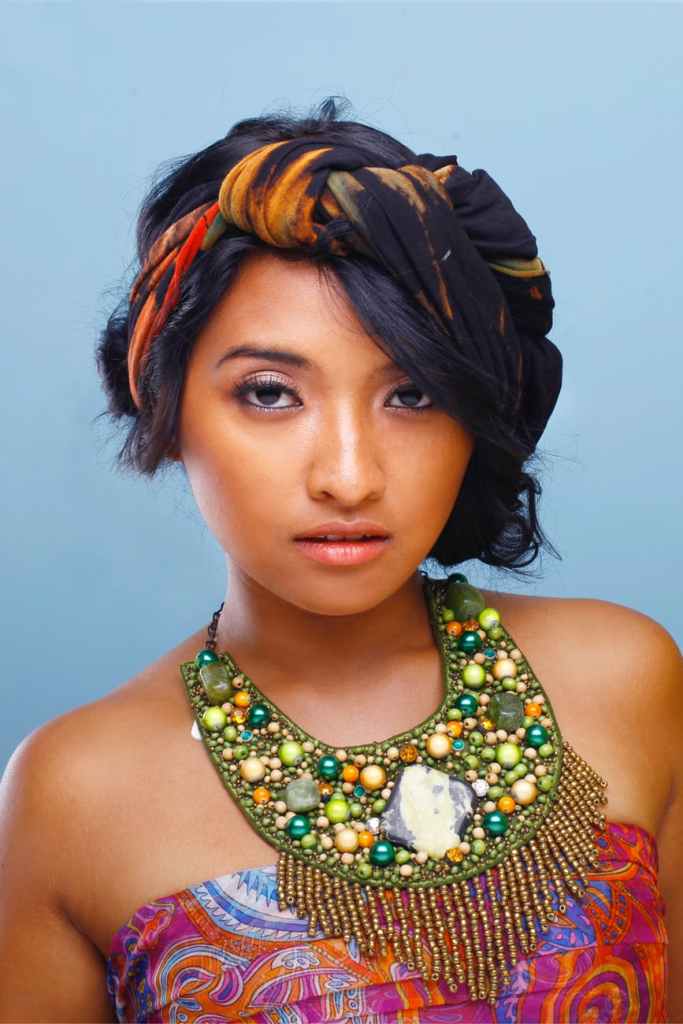
Photo by Hakim Santoso on Pexels.com 
Photo by THE MAKEUP MAACHINES on Pexels.com
Gamines are all about the details, something they share with Romantics and TR, the difference lies in the fabrics you use, choose stiffer rather than flowy textiles, and matte rather than shiny or sheer. An aspect they share with Dramatics is the use of lines, only that Gamines will need to combine horizontal with vertical, to form a Picasso-esque cubist image, rather than sticking with vertical lines. Another contrasting feature of Gamines vs Dramatics is the size factor, Dramatics look their best in slightly oversized clothing, whereas Gamines’ best look is in exact fits. Indian saris are a perfect example of this, as are traditional Indonesian outfits. Some modern Japanese fashion designers such as Chisato Tsumori ( who is well known for his unusual combinations of apparently incongruent themes and media), have produced some of the best Gamine looks you’ll find online, if you’re looking for artsy contemporary pieces. I personally love this juxtaposition of opposites, because there’s just so much versatility to it.
Gamines need to pack as much contrast as they can to fully express their multifaceted lines, and this is an artist’s dream come true! No wonder that some of the most eclectic looks and most avant-garde fashion statements specifically cater to the Gamine body type! One of my favorite fashion icons growing up was The Huxtable’s daughter, Denise, played by Lisa Bonet (currently Lilakoi Moon), former wife of another brilliant artist: Lenny Kravitz, and presently married to none other than The Aquaman. You don’t need to look any further than her for examples of how you can truly have fun with this look. Although she didn’t always respect Kibbe rules, she always did make full use of contrasts and details. Intricately tailored and asymmetrically constructed pieces really became a staple with her, and all this is part and parcel of the Gamine essence. But if you’re on the more conservative side, then Audrey Hepburn is a fabulous icon to emulate.
Hope this was helpful, and that you’ve found enough food for thought to give it a try. I invite you once more to visit my Pinterest Gamine board for my growing pin collection to inspire you. If you do attempt any of the tips I recommend, do comment below, or tag me @cafecaterpillar email me cafecaterpillar@gmail.com or tag me on your IG pictures @caterpillarsister . If you’d like me to go into further detail about anything I’ve written so far on Kibbe Hijabi style, just drop me a comment, an email, or an IG message.
This is it for now, hope you enjoy your summer, and that you’ll be back to read more on the blog.
Please note that this post has affiliate links to Shukr, if you purchase anything I suggest here using these links I’ll get a small commission, which won’t cost you a penny more.
Kibbe Dramatic: Hijabi Edition!
Dramatics are diametrically opposed to Romantics. If you’re a Dramatic, be it pure or soft, you are characterized by angularity, sharpness, strong features, an evident skeleton, which, unlike Naturals, isn’t necessarily draped in abundant musculature. This isn’t to say you must be thin, what stands out is the length of the bones, especially the limbs, and the sharpness of the facial features, regardless of weight. Dramatics have prominent features: high cheek bones, square jaws, a sharp nose, and an angular chin for the face, and pointy shoulders, long limbs, large or long hands, and little fleshiness (by this I mean that even if you are overweight or super buffed, the skeleton still reveals itself underneath as being strong and long). If Romantics look stereotypically female, or unapologetically sexy, Dramatics look more stereotypically robust and sharp, not muscular, necessarily, just very elongated and sharp. Think Keira Knightley, and Tilda Swinton, but don’t get stuck on their thinness, that’s actually quite irrelevant. Dramatics often seem slimmer than they are because their skeletons are large, which also means that looking smaller or more stereotypically feminine can sometimes be a bit of a challenge. If you’re sure you’re a Dramatic, check out Merriam Style’s post linked below for suggestions on how to get the look you want within your lines.
If you did your Kibbe test (which you can find on Aly Art’s channel), you should have predominantly answers A. If you have mostly A, but a significant number of E answers, you’re a Soft Dramatic. If, however, you have an even mixture of A and E answers, with a healthy dosage of Bs or Ds, then you’re a Gamine, and your body type will be on my next blog post. For now, let’s concentrate on Dramatics. Like Romantics, Dramatics only have one subdivision, because it these body types are at the extreme end of angular and can only get softer (whereas the Romantic is extremely soft and can only get more angular, becoming Theatrical Romantics). Unlike Naturals, Classics, and Gamines, which all have two subcategories each, which can lean either towards sharpness or softness. A Soft Dramatic has a lot of angularity, but it is draped in soft flesh (be it soft cheeks, luscious lips, or roundness around the chest or tummy area, like Sophia Loren, for example).
Dramatics are usually quite tall, but may be an average 5′ 5” (1.60 m) tall. Kibbe, although he does generalize heights, he doesn’t actually ask for specific measurements in his questions, because ultimately it’s not about size, it’s more about proportions and the overall delineation of your body, including the face. Although Dramatics are usually long and lanky, you might just have comparatively long limbs, which aren’t wide, proportionally speaking. Unlike the blunt, squarish angles of the Naturals, Dramatics have remarkably acute angles, sharp, pointy joints (knees, shoulders, jaws), and long, narrow hands and feet. Facial bones are sharp and prominent, though not necessarily large, in fact they may even be considered delicate, because of their narrowness, despite being quite long in relation to the rest of the body. Lips are often thin and straight, though Soft Dramatics will often have very fleshy and plump lips (like Raquel Welch and Sophia Loren). Pure Dramatics ordinarily won’t have an hourglass figure either, boasting a rather even ratio between hips and waist, and between waist and shoulders. However, Soft Dramatics often do have hourglass figures. Keep in mind that the Kibbe test comprises 16 questions, and it really doesn’t matter how your answers are distributed, it’s about majority answers, secondary and balance between your answers, not about where you find what. We’re all different in the end, and this test is really an approximation to guide you in a direction that is most likely to suit your lines. If you like to make your own clothes, check out Dr. T Designs’ post on how to sew your Kibbe type.

Photo by Pixabay on Pexels.com 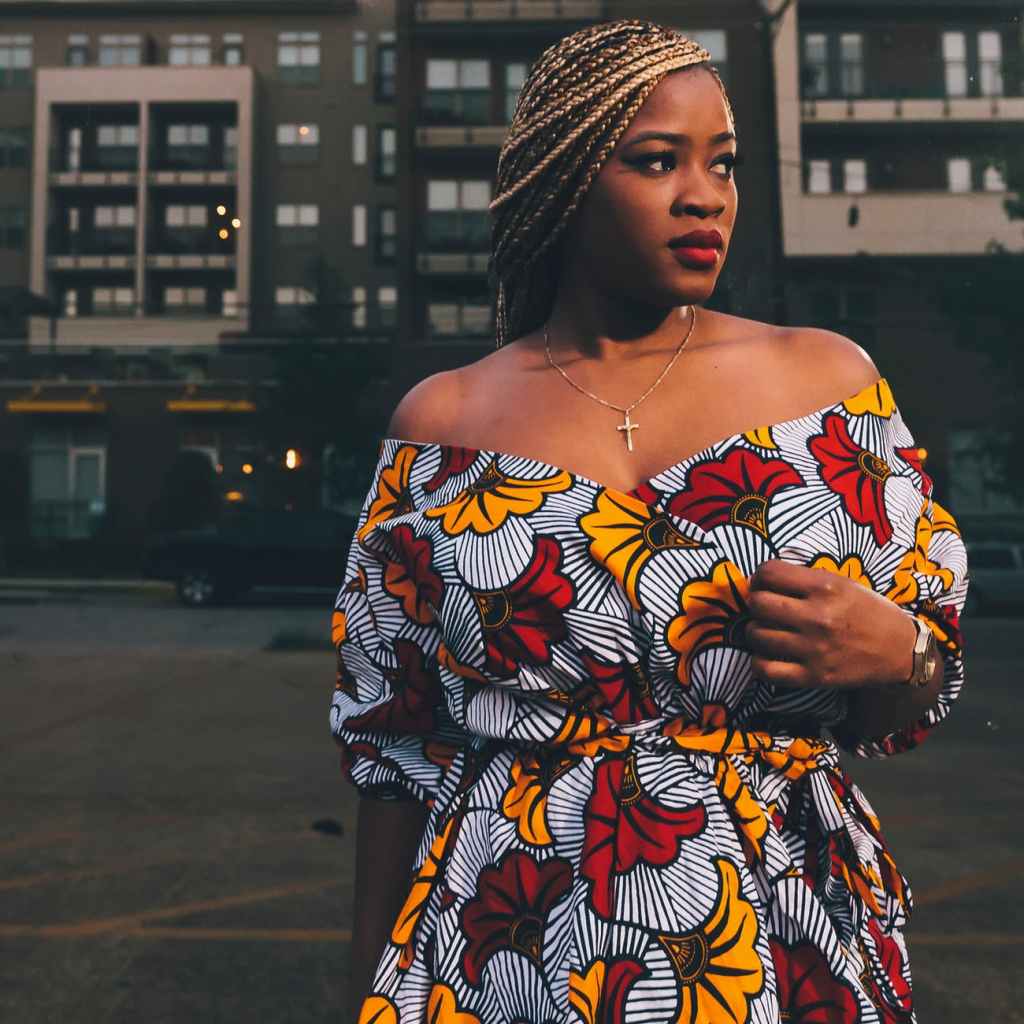
Photo by Matthew T Rader on Pexels.com 
Photo by Clem Onojeghuo on Pexels.com
Dramatics, whether pure or Soft aren’t normally petite, nor are they symmetrical. Very symmetrical people are usually Classics, which I covered in a previous post. However, don’t get too hung up on this, as I mentioned above, it’s not about numbers and clothing sizes, it’s about proportions. You might be surprised to learn that Soft Dramatics, Theatrical Romantics, and Soft Gamines are actually very similar, despite being all over the spectrum. They share an uneven distribution of extreme sharpness and extreme softness, and the trick in finding which one you fit in, is in the proportions between your answers. For example, I’m a Theatrical Romantic, my mother is a Soft Dramatic, and my aunt is a Soft Gamine. I’m the tallest of them all and we often exchange clothing, some of my clothes look glorious on my aunt, and some are fabulous on my mom. Despite being the tallest of the three, I have the thinnest bones and limbs, but I always look fleshier than either one of them, because that’s where I carry my weight, in my flesh rather than my bones. Therefore, even when I actually wear a smaller clothing size than either of them I look more curvatious, and if I wear baggy clothes that overlook my TR lines, I look rather heavier and larger than them, despite the actual measurements. For more information on how to switch looks around to finetune your particular look, I highly recommend these two youtube videos by Merriam Style where she gives many examples and a pretty thorough explanation of how to work it out.
Dramatics proper are very similar to Gamines, if it weren’t for their comparative largesse, long and lanky body lines, smaller eyes, and thinner lips. Primarily, the most obvious difference between Dramatics and Gamines isn’t necessarily in stature, but rather in the proportional size of their heads vs their bodies. Check out this insightful video of Merriam‘s for a thorough breakdown of how this happens.
Soft Dramatics might be confused for Theatrical Romantics, if not for the robustness of their bones and more even proportions in the skeleton, which are only draped in soft flesh (whereas the Theatrical Romantic would have smaller, thinner, more delicate bone structure covered in what seems like abundant soft flesh).
Dramatics tend to look like they’re in complete control of any and every situation, they look imposing and sometimes even intimidating. This can be a bit frustrating, especially for women whose character doesn’t really reflect this amount of confidence or aloofness. Even if you’re not very tall, you still look taller than you are, and that’s the question you probably answered A to in your Kibbe test. Again: proportions over measurements. You shouldn’t expect yourself to betray the inner you, but knowing what image you project, and what lines most suit your body’s lines, can help you create the look you are most comfortable with, and that most reflects what you want people to see about you. If you need more clarification on this issue, head on over to Merriam Style’s YouTube channel, where she posts videos about how to exude the image you want within your lines. Overall, Dramatics look best in clothes that are loose, though tailored, thicker fabrics, though not boxy, and slightly oversized rather than fitted.
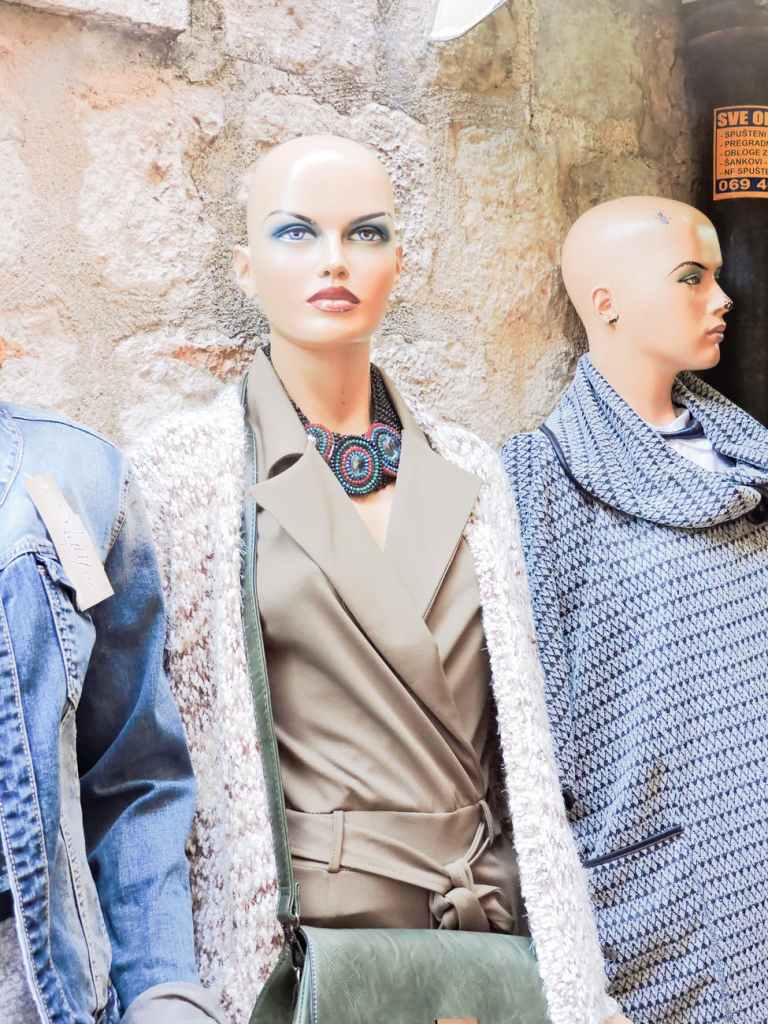
Photo by Ulrich Scharwu00e4chter on Pexels.com 
Photo by Lina Kivaka on Pexels.com 
Photo by Godisable Jacob on Pexels.com
It is key for you to respect the sharpness of your bone structure, so great tailoring, stiff fabrics, geometric designs (mind you not color blocks!), elongated and crisp silhouettes suit you perfectly, monochromatic looks are your go-to look. You might want to avoid anything too draped, ornate, or delicate-looking, as it’ll look too fussy on you and contrast sharply with your skeleton, making you look severe and intimidating. If you’re trying to look softer, then simply use long vertical draping, or sharp edged gowns in either stiff fabrics or angular designs. Moderate to heavy weight fabrics look best on you, without too much texture or sheen. If you like glamour, then go for sparkle, but go all the way, say with all around sequins, or head to toe metallic. Emphasize your shoulders with crisp shoulder edges, even pads if you want, and if you’re a Soft Dramatic always think T (horizontal at the top and vertical all the way down, possibly, though not necessarily with waist emphasis). You might want to avoid sheer, delicately laced, or very fitting outfits, loose is always better on you. Avoid chunky fabrics and weaves, they require broader bones to sustain them. Respect the narrow length of your limbs, and replicate it in your garments with loose generosity.
Minimalist lines are your staples. But you can easily go for bold geometrics too! Just keep in mind that you’re looking for loose, tailored, clean, vertical lines. Unlike Gamines, horizontal lines that break up your vertical line don’t suit you, so when choosing how to combine your outfits, try to keep them monochromatic and avoid color blocks. The only forgiving horizontal line is around your shoulders, because you can take it! This is a trait you share with Theatrical Romantics. Soft Dramatics can afford a splash of color, in fact a bit of colorful drama will bring out your unique strengths, contrasting colors look glamorous, provided you don’t break your silhouette in half, so if you wear a jilbab in your favorite neutral, be sure to wear a hijab in contrasting color, preferably from the opposite side of the color wheel (just make sure it doesn’t clash with your Undertone). One Muslimah owned business who makes the perfect minimalist Dramatic line ethically and in sustainable, natural fibres on demand at an amazingly affordable price for the quality is Nadinoo, based in the UK, and she ships internationally! Because she makes each piece on demand, it does require some time to get your item, but you can specify the exact length and width that you want based on your own hijab requirements, and the timeless pieces will carry you through every stage of your life, from single freedom loving spirit, through your entire pregnancy, and into your play-loving and relaxation of motherhood and retirement. Now that’s timeless quality! If you’re thinking of a capsule wardrobe and you’re a Dramatic, start with Nadinoo, and you won’t be disappointed, bi idhnillah! My personal favorite would be this 100% organic eucalyptus pant and top, which is absolutely gorgeous!

For tops, you’ll look fabulous in clean necklines, whether V, skinny turtlenecks, boat-neck, square, dress-shirt, or Mandarin style, you can’t go wrong, as long as they have clear geometric tailoring. Soft Dramatics might want to emphasize their T line (shoulders over the rest of the body), and they definitely can get away with waist emphasis, as mentioned above. Your jackets should be tailored, avoid shapeless Natural overcoats, as you’ll drown in them. Longer is better than shorter, so jilbabs, especially the crisp linen, cotton, and wool tailored styles that have been popping out lately are sewn with your silhouette in mind. Below are some examples you can find on Shukr, that would suit you well. You can even pull off double breasted and military-style closures, and you’re probably the only body type who can, so enjoy it! Such as this made-to order triangular pleated linen blend jilbab from Shukr. Or this military inspired double-breasted gold-buttoned linen blend jilbab. If you’re into denim, then this crisp denim side-breasted Mandarin-collared jilbab is calling your name! If you love denim but are looking for something a bit more muted, this Tokyo inspired denim jilbab is for you. It features the triangularity found in the above jilbab with the understated denim look you crave. If denim isn’t you, and you’re not partial to triangular detail, but you liked the style, here’s another 100% cotton look with a Mandarin collar, side lapel, and all over vertical tailoring that you might enjoy.
Your skirts should be straight and long, so hijabi approved, no doubt! Pleats are good, as long as they stay put (perhaps stitched half way down your hips). A-line or slightly flaring at the bottom is fine, just avoid full skirts and gathered waists, as well as overly draped and shirred shapes. Soft Dramatics can use a tiny bit of draping, but always emphasize vertical over horizontal lines. Here a few examples from Shukr that might inspire you. Corduroy is the perfect fabric for you, and this skirt has all the elements you want to look for in a long crispy tailored skirt. If you’re heading towards summer, then this paneled 100% cotton maxi skirt might be ideal. For more formal occasions you might prefer something like this pleated part Lyocell maxi skirt, which although a bit lighter in fabric, does have a certain vertical heaviness to it due to the piped vertical pleats that run all the way down. For very informal denim comfort this is probably the best style for you. Nevertheless, there are many other skirts that would complement your lines that I don’t include here, such as in the pictures below. Veiled Collection (based in New York) and Jennah Boutique (based in France) both have similar styles to these in their shops. I was only able to get an image from Jennah Boutique to show here, but below you can see a model similar to the one offered on Veiled Collection, which is currently on sale.

Pants should be loose, tailored, even deep-pleated, and hemmed if you’d like. Just ensure to stay away from tight, tapered, baggy, and flowy fabrics and designs. Think 1930’s and 1940’s pant styles, as well as 1990’s sharp looks, they’re all meant for you! Here are a few examples from Shukr. Pintucked formal wide-legged pant. These breezy linen trousers for summer. Or these gorgeous flared denim-lyocell pants.
Fortunately, waist emphasis isn’t a must for you, so hijab requirements are easily met with your body type! As long as you avoid chunky, unconstructed designs, and emphasize length over width, you should look fine in any dress. Medium weight fabrics such as cotton, linen, silk, wool, and corduroy look amazing on both D and SD). SDs can get away with more ornateness, more detail, provided they are substantial (as in structured, sturdy, rather than delicate) enough not to look frilly or frivolous on you. Remember you look like the boss, and whether you are or not, diverging from this reality will make you look less competent.
As far as accessories go, you want to look for geometric designs throughout: from your purses, to your shoes, belts, hats, and jewelry. Avoid rounded shapes with delicately ornate details. Clutches, envelopes, and briefcases and the like for bags. Straight heels and elegant shoes without fussy details. Bold, wide, stiff leather belts if you must use them, but avoiding them would be preferable altogether, if you must have them, opt for drop-waist and angular buckles. If you like modern, cutting-edge expressionist jewelry, a l’avant-guarde, then you’re in luck, because that’s exactly what will bring out the best in you. Flaunt large pieces, but don’t go chunky and bulky, leave that to the Naturals. You want clean lines, nothing too fussy.

Photo by Kaboompics .com on Pexels.com 
Photo by Mu00eddia on Pexels.com 
Photo by Pixabay on Pexels.com 
Photo by Snapwire on Pexels.com
If you wear hijab, triangular crisp silks are your God-sent, but you can also use sleek cotton and viscose, as long as you avoid draping it from shoulder to shoulder. If you must drape, let one end drape straight down from one shoulder. If you want your chest to be covered, a triangular hijab stile might be best suited, perhaps gathered with a nice geometric broche in the middle. Asymmetric draping would work too, if you want to style it up a bit and avoid straight down triangles. The idea is to emphasize vertical over horizontal.

Photo by Maya Anggraeni on Pexels.com 
Photo by Ismail Salad Somalia on Pexels.com
For parties, and occasions in which you want to lay your head bare, opt for elaborate coiffes with bold shapes. It should look sophisticated and well done, but not stiff. Layered but not whispy. Dramatics look just right in sharp geometric cuts, but SDs need a bit more of a wave, to account for the fleshiness of their face and body and echo it.
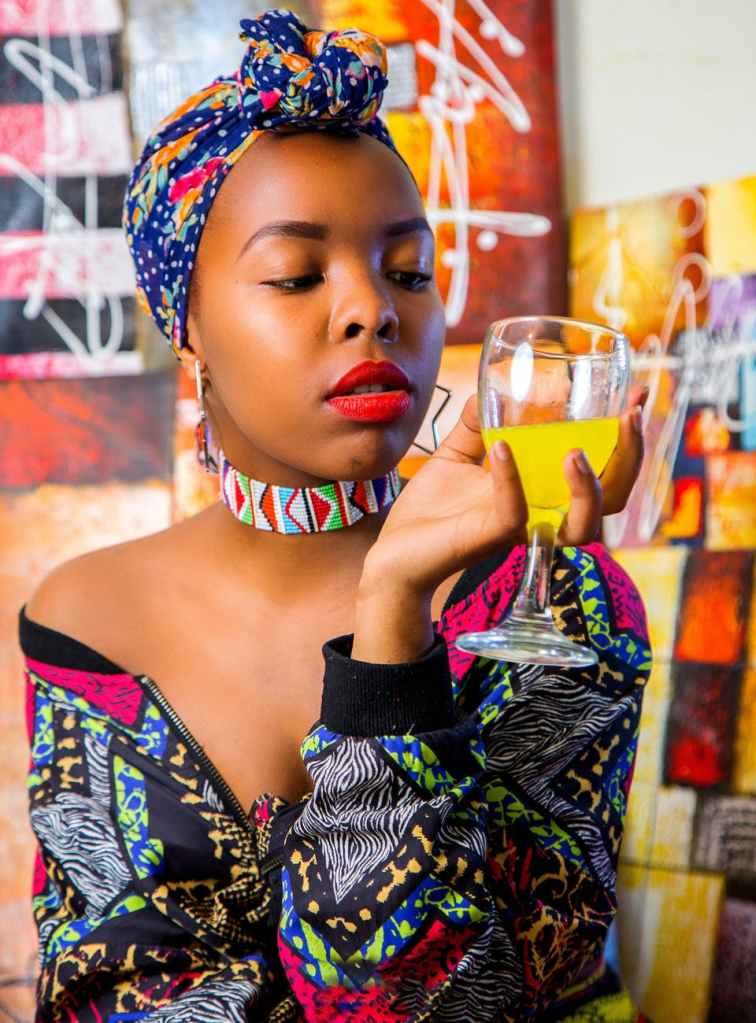
Photo by Terricks Noah on Pexels.com 
Photo by NastyaSensei Sens on Pexels.com 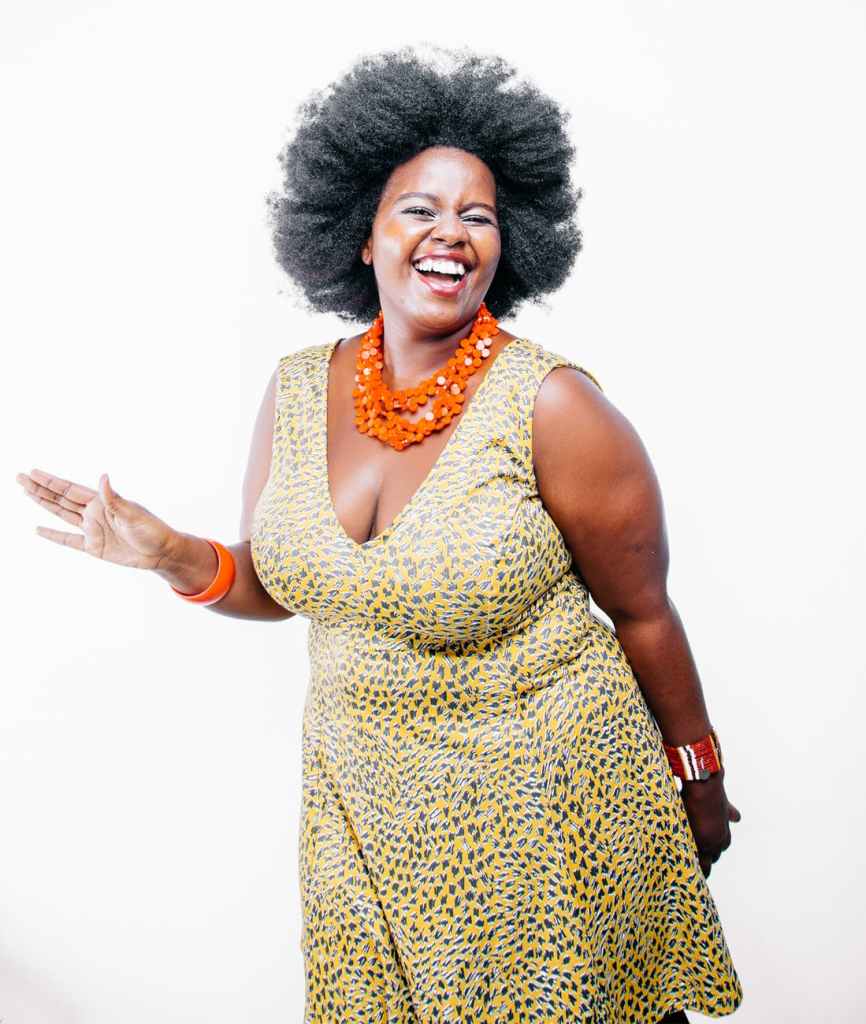
Photo by Cflgroup Media on Pexels.com 
Photo by Pixabay on Pexels.com 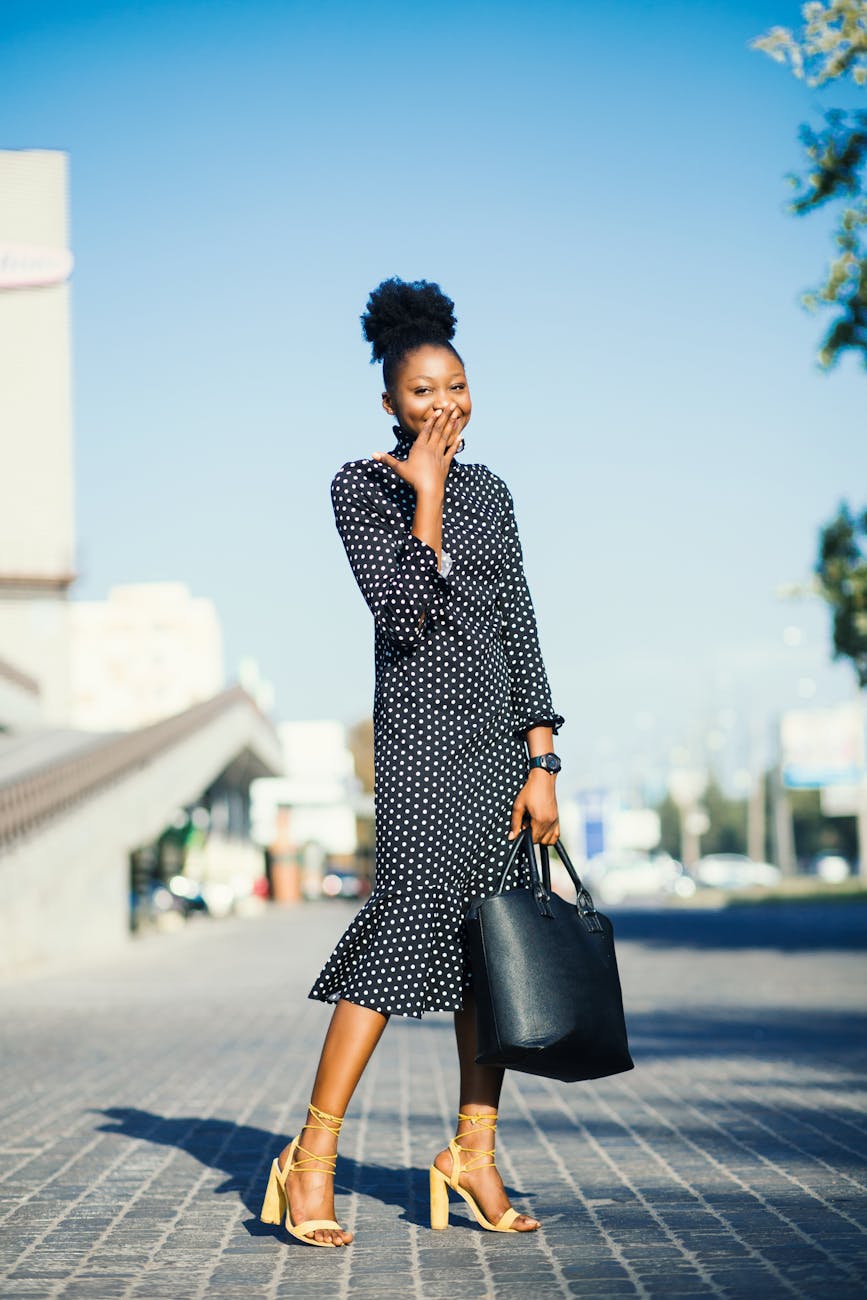
Photo by Godisable Jacob on Pexels.com
I hope you found this illuminating, and that if you’re a D or a SD, you’ll try these suggestions. If you’re still not sure what you are, drop me a comment or an email, and I might be able to help you out. Should you need some inspiration, head on over to my Pinterest and check out my Kibbe folder, which has hundreds of pictures for each Kibbe type.
(Shukr links are affiliate links, I get a small percentage of the profits for sending you their way, but it costs you nothing. I’m currently not affiliated, nor do I get freebies from any other company I mentioned here.)
Kibbe Natural: Hijabi Edition
Features:
If you have predominantly answers B in the Kibbe test, with no clear second, you have a soft Yang balance, meaning your bone structure is mostly yang (angular, robust), but you also have a soft ying undercurrent, be it in blunt rather than sharp edges, or in rounder muscular tones rather than tout skin/flesh. You give an aura of athleticism, whether you’re tall or on the petite side, you look either long and lean, or simply fit, and you tend to gain weight in your mid-section before anywhere else (unlike the predominantly ying boned Romantics, the mosaic Gamines, or the balanced Classics who gain fleshiness around the thighs, face, chest, or upper arms), much like Dramatics. You fall between the Dramatics and the Classics in the spectrum of possibilities. Flamboyant Naturals have most answers B, but As are a close second. If, on the other hand, your second most obtained response was either D or E, then you’re a Soft Natural, meaning that although your bone structure is predominantly yang, you have a lot of softness to you, be it in terms of fleshiness, or facial features (rounded lips/eyes, softer cheekbones or jawline, etc.). If you have an even mixture of A and E extremes with many B answers you’re not Natural, you’re Gamine, and we’ll cover your category in an upcoming blog.
Cindy Crawford is a Natural, as is Liv Taylor, and Jennifer Aniston. All of these timeless beauties exemplify a strong body structure, whether soft and long like Liv, angular without being sharp like Cindy, or rounder and fit like Jennifer. Scarlett Johansen is an other example of a Soft Natural. Naturals are characterized by a more nuanced angularity which lacks the clear sharpness of Dramatics, without quite reaching the uncompromising balance of the Classics. Bones are broader, musculature is slightly pronounced, eyes and lips are often (though not always) on the wider side, rather than narrow and sharp. Although facial features are strong, they aren’t overtly soft in nature. The Soft Natural will be slightly more curvy, possibly shorter, and with rounder facial features that are reminiscent of the Romantics.

Overall Naturals give off the impression of being open-minded, free spirited, friendly, approachable, and active. Naturals are usually moderately tall, but don’t have to be. They’re fairly straight-bodied (not lushly curved), although Soft Naturals will lean more towards curviness, especially in the upper thigh and arm areas. Generally speaking, Naturals are fairly easy to identify because of the broadness of their shoulders, compared to their hips, but this isn’t always a given. Remember that the Kibbe test has 16 questions, and it’s the overall balance of these questions that is assessed in these categorizations. Naturals often have wider, squarish hands, though some might have long and slender, or even short and stubby hands. Naturals aren’t often large-chested, and tend to be long-waisted, with a small waist-to-hip ratio. Even when overweight the Natural will tend to look straight, rather than curvy, sometimes looking a bit stocky. By and large Naturals will not have a very pronounced hourglass figure, extremely sharp, symmetrical, or lush features, but they’ll often be either boyishly thin or muscular.
Below you’ll find the general guidelines for Naturals. If you’re Flamboyant Natural, lean more towards angularity, severity, geometrics, bolder, and more contrasting looks, whereas if you’re a Soft Natural, you’ll go in the opposite direction opting for rounder, more detailed, more delicate looks.
Clothing:
Anything that adds length is great: long vertical lines, be it in pattern (rectangular standing up), or in shape (A line skirts, maxi skirts, long, straight cardigans and shapeless tops) are ideal. Rounded-edged rectangles, soft oblongs, irregular shapes, and soft asymmetrical shapes are great. Think hippie styles of the 70’s and you get the idea. Naturally flowing materials, nothing too stiff or boxy, just naturally falling from your shoulders is fantastic on you. Flowy and slightly stiffer hijabs work great on you, as do all sorts of jilbabs and abayas. Long maxi skirts, straight legged pants, palazzo pants without creases (leave the creases for Dramatics, or an especially angular Flamboyant Natural). Long, unconstructed silhouettes look amazing on you, think loose, easy fits.
Your perfect look consists of loose fitting jeans and a sweater, a loose T and long cardigan. Scarves and a variety of fabric mixes look fabulous on you. This is where you are welcome to express your personality, as excessive detailing is too busy looking on you. Separates call out your name, and the sky is the limit for you. Unlike Dramatics and Romantics you can mix and match styles all you want, provided you respect the general vertical simple lines of your body’s skeleton.
Overly matched looks are extremely boring on you, take full advantage of the versatility of textures and patterns at your disposal and go wild with them. “Designer sportswear” was practically designed with your body-type in mind, so indulge in these types of lines.
When mixing and matching, however, beware of breaking the overall vertical impression. Breaking your vertical line is what Gamines look best in, not you. So mix to your heart’s content, but maintain the overall top to bottom flow, vertical fluidity, and sophisticated pairing of patterns, designs, cuts, and fabrics.
In jackets an unconstructed vertical jacket with patched pockets (as are back in this year) look gorgeous on you, as do long cardigans (a hijabi favorite), and long tunics. If you leave it open, you could even wear a double breasted blazer!
Simplicity is key.
Maxi skirts are your best friend, A lined, straight, gathered at the waist (though you should avoid too many stiff pleats, accordeon pleats, and overly gathered waists, as well as tight pencil skirts). Culottes, gauchos, and slightly flared hemlines are fine.
Sweatpants were designed with you in mind, so go ahead and sport them! Any type of pant looks fabulous on you, so don’t be shy, whether it be formal, or a draw-string beach look, you can’t go wrong! The only pant to avoid is perhaps the harem style, which gives a balloon effect (gathered waist, poufy middle, and tapered or closed ankle), and extremely fitted leggings, other than these, you’re good to go.
Sweaters are your best friend, as with pants, there’s almost no kind of sweater that won’t look good on you. Just avoid overly feminine and overly chunky ones.
Blouses are good as long as they’re simple, not frilly, and not overly structured or geometrical.
In terms of prints you can include geometrics, animal prints, funky styles, irregular, and of virtually any scale, provided they contribute to the overall vertical line of your body. Softly blended, slightly curved, rather than severely angular are preferable.
Naturals probably have the most versatile wardrobe on the planet, and capsule wardrobes should be a cinch, since you can virtually mix and match anything with anything you own!

Avoid:
Very intricate and ornate patterns, decorative pieces, minutely detailed trimmings, very sharp geometrical shapes (in pattern or cut).
Oversized, shapeless silhouettes, severely straight or overly rounded shapes in pattern or design. Cropped styles, severely constructed and angular styles (with wide lapels or peplums, many gathers, pleats, etc.).
Sheer, shiny, clingy and flimsy fabrics.
Being too matchy-matchy.
Balloon-style pants and skirts. Too many gathers or pleats at the waist.
Pencil-thin looks. Fitted anything, including leggings.
Watercolor prints, florals, polka-dots, and tiny prints are your enemy and will make you look completely out of sorts, larger than life or simply like you belong elsewhere.
Accessories:
Luckily your style doesn’t require over-accessorizing, so if you can find one or two go-to bags, you’re good to go. Simple, minimalistic designs, rounded edged geometrical shapes of any color would work wonders. Moderately-sized, shoulder bags and clutches work well. Supple leather is ideal, nothing too fine or too edgy.
For shoes go for simply tailored, low to moderate heels that are straight and preferably not tapered. Wedges are fine. Avoid strappy, overly decorated or complicated designs.
Belts are good as long as they’re loosely fitted (drop-waist) and simple in design, preferably medium to thick width (2-10 cm). Buckles are ok, provided they’re not bedazzled or overly intricate in design. Ribbons and saches work just as well!
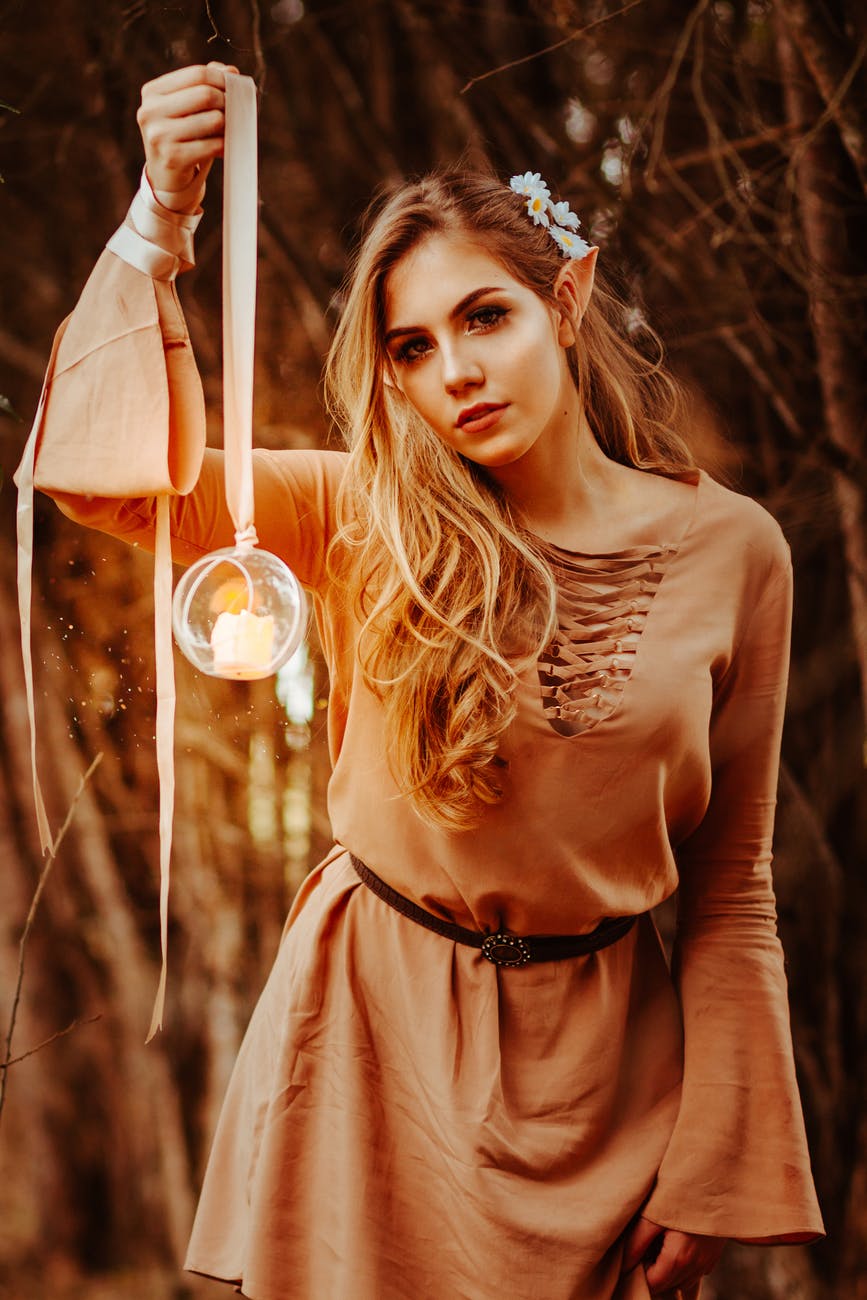
If you wear hats, keep them floppy and loose and steer clear of stiff and/or ornate styles.
As for jewelry you look fabulous in nature inspired looks, think Celtic (Elvish, Lord of the Rings designs), wearable art designs, funky costume pieces, ethnic jewelry, rugged turquoise or semi-precious stones on tarnished silver or brass scream your name. Irregularly shaped brooches, earrings, long necklaces with a single pendant or a series of different-colored beads all add interest without breaking with your lines. Just as long as you stay away from super-luxurious, shiny, overly classy, Rococo or Baroque styles, and boring symmetry… you should look like a million bucks!
Hair and Make-up:
For parties you want your hair to be loose, free-spirited, feathered, airy. Layering is a must. Avoid strict ’40s styles, they’re too severe and will age you tremendously.
If you like to wear make-up, keep it as neutral as possible, even at ladies only parties. This doesn’t mean wear no make-up, but practice as much as possible the “natural” look, which can be as difficult to achieve as the most sophisticated cat-eye or smoky-eyed look. You should try to avoid glitter and sparkle, opting for matte finishes. Go for a complete look, rather than heavy make-up on the eyes and clear lips. Lip gloss is fine, but seek balance in your make-up, say with a nude eye shadow and thin eye-liner with mascara. The idea is for you to look naturally healthy, so rosy cheeks are fine, as long as they don’t contrast with the rest of your face, and are too starkly defined.
For hundreds of ideas on how to dress for your Kibbe body type, visit my Pinterest Kibbe Naturals Board, where you’ll find plenty of inspiration for looks, from top to bottom, including accessories, make-up, evening and every-day wear.
Hope you enjoyed reading this, and if you’re not a Natural, check out my other posts on Romantic and Theatrical Romantic Type (Kibbe Style): Hijab edition! and Kibbe Classic: Hijabi Version. Dramatics and Gamines will follow soon, insha Allah.
Kibbe Classic: Hijabi Version
There’s this misconception out there in the ethers that Kibbe is about imposing a style based on your curves, and that it’s limited to Caucasian women’s looks. I vehemently disagree with both these beliefs. The first is simply not based on fact, because the style Kibbe worked with was firmly established in the fashion of the 80’s, and yet here we are, almost four decades later, using his principals and applying them to our own fashion sense in a different century! Kibbe’s principals are based on lines, you don’t have to be sexy if you’re Romantic, a hippie if you’re Natural, cute and childish if you’re Gamine, or stiff if you’re Dramatic. If you want further evidence of this, I highly recommend you go to Merriam Style youtube channel, where she discusses the ways in which you can use your lines to change your look or style, and how one shouldn’t get stuck on the stereotypes. Kibbe points out what LINES suit you best, look most natural on you, don’t contrast with your nature, but what you wear is completely up to you. You can follow the rules and be sassy, dignified, sultry, cute, carefree. Or you can go out of your way to break all the rules and let your clothes do all the talking. But I think most of us want our personalities to shine through, and Kibbe helps us do that. As for the second misconception, please visit this other series of Merriam Style’s videos, where she delves deeper into African American Kibbe styles, and this one where she investigates weight and body type. If you understand the principals, there’s nothing to prevent anyone, of any body type, or facial features, to benefit from them.
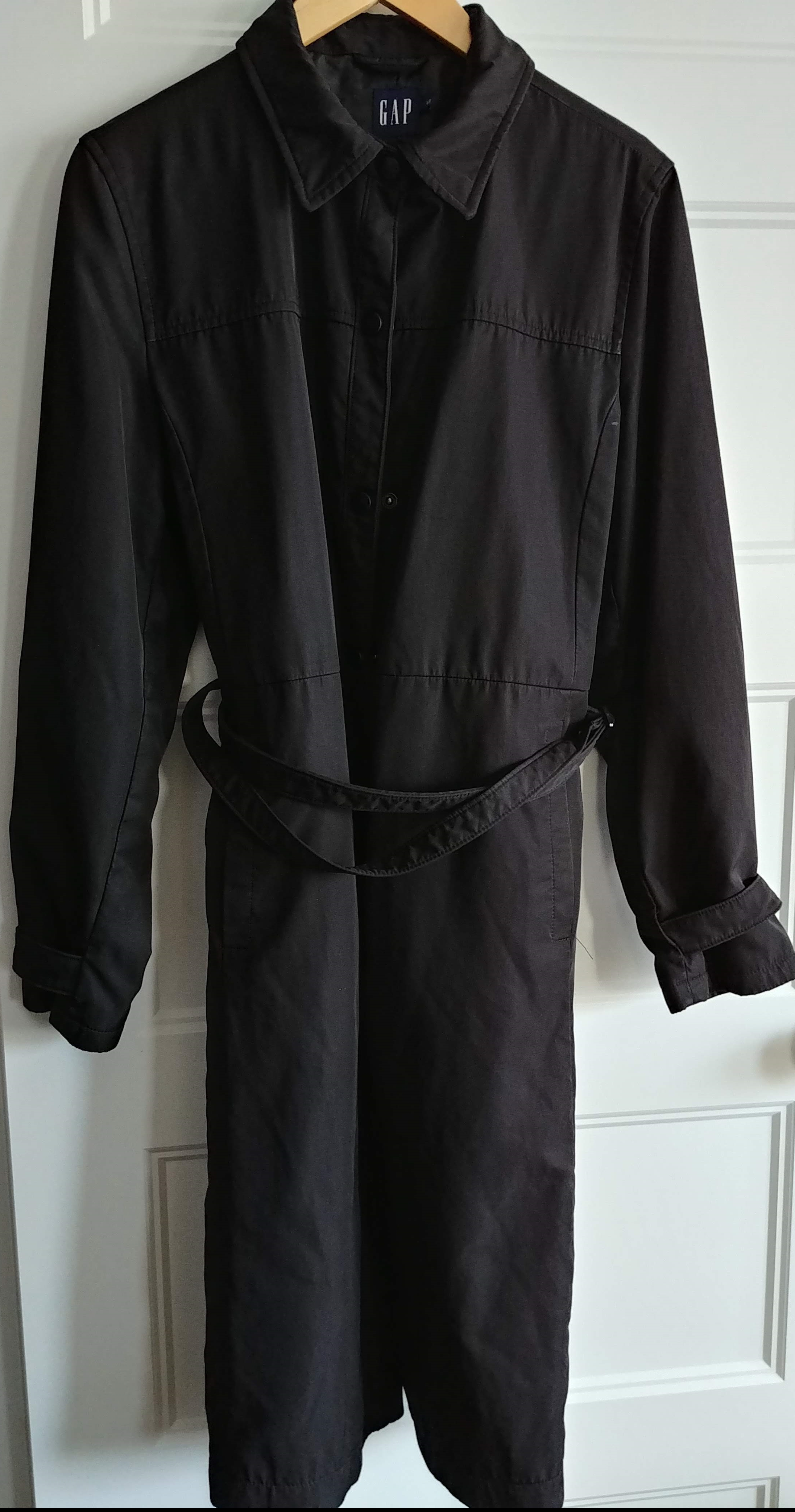
That aside, let’s get into Classic types. Classic is basically the most symmetrical of all forms. They are characterized by the absence of extremities, and this is basically the ethos of the category. Balance and symmetry are the key words of this group, which ranges from Soft (ying, rounded, feminine) Classic to Dramatic Classic (yang, angular, “masculine). Most of the answers are C. For your test, visit Aly Art’s youtube channel, , where you’ll also find a ton of details and examples for each body type and what coats, jewelry, dresses, pants, sweaters, etc. suit yours. If you have mostly C, but A or B (angular, yang) are a close second, then you’re a Dramatic Classic. Although most of you is well-blended, some aspects of your bone structure are more dominant and give you a bit of an edge. If most of your answers are C, but you have a lot of D or E answers as well, then you’re a soft Classic. This means that although your body is overall very balanced (not very curvy or angular), your facial features are rounder.
This doesn’t mean you’re a perfect hourglass, and it doesn’t mean you fit everything that’s out there in your size. Although this is the model normally held up as the ideal body, keep in mind that many models in the 90’s were actually Naturals, not Classics. Classics, however will have an easier time finding clothes that fit, precisely because their curves aren’t as pronounced as Romantics, and because their overall look is understated, not in any way exaggerated. You might have one or two non Classic elements (such as a large nose, or sloping shoulders), but overall the majority of your lines are uniform and balanced. This is the overall image you give, and if you keep your clothes around the same lines, you’ll look your best. It means that anything over the top is not just going to stand out, it’s going to scream for you.
A company that makes ethical and sustainable Muslimah fashion that is suitable to Classics is Shukr. See my other posts for links for your respective region.
Avoid baggy clothes, unconstructed silhouettes, stiff or heavy fabrics, bright color blocks, as well as extremely light fabrics (lace, chiffon, very thin silk). Avoid combining a wide variety of styles, and wild combinations of textures or colors. Avoid clothes that are too delicate, too ornate, childish or cartoonish.
Always go for luxurious fabrics (medium weight silk, cashmere, mohair) light to medium weight fabrics with just the right amount of tailoring (no deep pleats, peplums, steer away from obvious details like cuffs on your pants, big pockets, sharp corners anywhere). Keep in mind that your ideal is balance and lack of contrast.
If you’re Dramatic classic you can get away with slight angularities, slightly more edgy lines (heavier fabrics and tailoring), chunkier jewelry, and other statement pieces. You can lean more toward Dramatic lines, but steer clear of Natural lines, as these are your arch nemesis.
If you’re Soft Classic appliques, lace, shiny, delicate decorations are ok, if not overdone. Avoid too much draping, rough textures, bulky fabrics, stiff designs, too rounded or too geometrical (say in the lapel for example), elements that are best suited to Romantics and Theatrical Romantics, for example aren’t for you. You can use a bit of it if you’re Classic, just don’t overdo it, it’ll scream “I don’t belong in these clothes!” Have your cuffs tapered in at the wrist and ankles. Wide isn’t ideal for you, unless it’s in a delicate thin fabric that makes up for this extra fabric.
For jewelry use classic designs, nothing too flashy, colorful or bulky. Pearls and delicate jewelry works best. Just make sure not to overdo it. Too much jewelry is too much, and will distract from the cleanliness of your natural beauty. I’m not encouraging you to show off your beauty (I’m talking specifically to hijabis here), but simply to allow your best self to shine through, rather than letting your accessories and clothes do all the talking for you.
Accessories: thin to medium thickness belts, medium sized bags, not round, not sharp, not frilly, not girly. Your operative words are symmetry and balance. You’re a classy soft lady and anything that swings too much in any direction will distract from your body’s beautiful balance! Masha Allah!
For hijab you’re really lucky, because scarves look gorgeous on you! Choose slightly slippery kinds that give you some draping, but avoid extra large ones, which risk engulfing you. Avoid super complicated bun-heavy styles, asymmetrical styles, and overly decorated pins and underscarves. They’ll distract from you.
Don’t worry about fancy hijab styles, as long as it’s not too big, bright, stiff, or flowy (lots of frills and extra decorations like lace, studs, etc.). It should look fine, simply perfect! This tutorial below is one example of a balanced, understated hijab style that would suit all Classics.
For more ideas, check my Pinterest Kibbe folder account under the Kibbe folder, you’re sure to find many more ideas and inspiration.
Hope you enjoyed this, and don’t forget to subscribe, to find out more about other Kibbe types that you can get inspiration from! Dramatic type is up next!
Women
We’ve had a lot on our hands… I want to say lately, but it’s nearing on a decade now, maybe even more than a decade! Yes, probably more. A gazillion thoughts run through my brain about a trillion different things. But they return, without working themselves out, they return, like a ghost waiting for its release to the other side, like rays of light being reflected in a room filled with mirrors… blinding me to what’s really happening, to what shape they’re trying to reflect… confusing my every thought into a kaleidoscope of beautiful shapes that make an ever changing mosaic that rarely, if ever, betrays its original inspiration.
I have LOVED few literary works like I have loved The Color Purple, few poetic verses have been edged in my brain like Guillermo Carnero’s verse on the matronas (which I partially cited here). It’s not a coincidence that I cited it while thinking about the very same ideas I’m ruminating on now. It’s not perchance that The Color Purple is now a play in theatres. It’s no accident that I only recently came across feminist readings of it. It is all coalescing in a way that makes the image clearer, more distinguishable than ever. And I want to share my thoughts on this process of revelation with all of you, my female, and female loving readers.
It may seem, sometimes, I admit, that I’m all over the map on this blog, talking to remarkable women, sharing recipes, some keto tips, fashion, and poetry. What is this? Is it a meeting place? A fashion blog? Is it a writer’s dumpsite? Is it a lifestyle and food blog? Truth is, that it’s about women, and all the things that unite us. It’s about the foods that make us comfortable, strong, indispensable, loved. It’s about the feelings we can’t always express freely, so we code into verses. It’s about the connecting dots between successes of diverging paths. And it’s about how beautiful we are, or want to be. I know I occasionally write about my kids as well, because many of us identify as mothers, and are first and foremost that. But we are more than that, like we are more than what we wear, more than what we believe. We are more than what we do. All these things are various expressions of our identities, and they define, as well as free us. Within these bounds we’ve excelled, and many of us have gone on beyond them. It’s a compendium of knowledge about, for, and by women. Knowledge we can use to empower each other, in more ways than one.
I’ve concentrated a lot on fashion lately, not because I suddenly care more about fashion than before, but for three main reasons. The first is because I feel that it coincides with two of my favorite themes: living a more meaningful life (through the virtues of minimalism, and a more wholesome and authentic self), and empowering, or at least inspiring women to be their best selves. The second reason is because it’s very structured and delineated, and it’s easy to work on it in small increments, so I’m able to build upon the subject in my shrinking free time. The third reason, which I’m admittedly not proud of, but points to the heart of the matter at hand in this jumble of thoughts I just introduced to you. This hidden motive is because I am anticipating dipping my feet in uncomfortable waters, where I’ve felt ravaged before. I feel the need to arm myself with transferrable skills that can appeal to a wide audience. Like a magician would hone his craft based on the audience he’s anticipating; I want to have something to hold in front of those who’ll no doubt pounce at me and attack me mercilessly. I need these tools to distract them, to keep them at arm’s length, and maybe appeal to them. I’m gearing up to protect myself, because I fear being vulnerable to their attacks. They are not superficial women, but we all want to look our best at parties, and if I can give them tools to achieve that goal, they may take more kindly to me, or might forget that they wanted to tear me apart before I leave their sight.
Women who don’t care about their looks often work a lot on their character. We talk about literature, ideas, kids, and all sorts of things near and dear to our hearts. But women whose power (acquired or innate) is limited can be truly daunting, sometimes because you don’t know how or if they want assistance, these aren’t the women I’m preparing to face. The rest because they’ll jump on the opportunity to feel stronger by making others weaker. These are who I’m gearing up to face. They’ll feel any advantage you may not even know you have as a threat. If you’re pretty they’ll make you doubt yourself, if you’re ugly they’ll make sure you know it. The list goes on. But if you come prepared, and you acknowledge their stratagem, whilst providing them with tools to improve themselves, they might listen, instead of spewing poison out of their mouths and eyes at you. It takes tremendous presence of mind to be able to grab their attention, as they’re skillful multitaskers and know every sort of manipulation there is out there. Pure willingness to be a bit helpful, alert kindness (I say a bit helpful and alert because they know how to abuse kindness that isn’t alert, and will spit in the face of help if they think you view them as helpless), can go a long way. These are skilled manipulators, who know how to disguise their hatred into the most benevolent looking smiles. They are the oppressed oppressors who know their place and will make the best of it, even at your expense if it comes to it. They have made a science out of looking flawless and being wrought with ills. So I need to equip myself, and I need to be ready. Although I fancy myself a strong person, I’ve been in their clutches before, and barely made it out alive. I don’t want to make the same mistake again.
If it’s this bad, then why even bother? Why not just stay out of the water and call it a day? Well… it’s easier said than done, and because… let’s face it, this is life. You win some and you loose some, and some toxicity may actually boost our immune system. Now that I know what to expect, maybe I have become immune. But if I’m so scared, why am I putting this all out there, where they could read it and know what I’m up to? Well… there’s something else: The Color Purple. I never figured out why I loved that book so much, until a couple of weeks ago, when it hit me like a lightening bolt: the women. The manipulation, the teasing, the violence, the willingness to play the game, and the ability to stop it. It was awesome! It had it all: the entire realm of queens, all in one roll. The victim perpetrator, the facilitator, the cycle breaker, the cycle creator… all united under the same umbrella shading them all: ignorant, racist patriarchy that doesn’t know it is, or at least doesn’t realize just how deeply it is ignorant, racist, and patriarchal. I don’t fancy myself a sage, but I have survived all of these, to some extent, and continue to have hope for all my sisters, even those who’d sooner denounce me.
Because my womanly powers of grace, nurturing, and dignity are every woman’s. We need to hone them not only for our own survival, acceptance, and success, but for the benefit of us all. We need to stick together, and perhaps even more so when we are far apart. We all need to make an extra effort to get along and get the ball rolling toward a more just and caring society.
Fashion allows me a small window of opportunity, through which I may showcase potential skills beyond it. Fashion is superficial, but its ramifications are deep and wide. It can remain superficial, like a virtual armor, thus allowing me (and others) some respite, or it can be used for more good than that. We shall see. Maybe they’ll feel the power of solidarity, and run with it. One can always, still, hope.







